|
Me Sahyadri |
|
May 2018 |
|
Volume 5, number 9, # 63 |
|
Mysteries of Maval Caves – Patan Caves |
Please use minimum 1280 pixel horizontal screen resolution for viewing. Please be patient while all the images in webpage are loaded. Please do not use the images for any commercial use without permission. Text in Marathi and English is not exact translation. Please give sufficient time to allow the photographs to load. Special thanks to Mayur Tikone, Patanand all those who helped me during the compilation and for the help and guidance during the activity. |
|
|
|
|
देशाची आर्थिक प्रगती व्हावी असे सर्व नागरिकांना वाटणे सहाजिक आहे. अर्थकारणामुळे मिळणारा रोजगार, समृद्धी यासाठी सर्वांनाच आर्थिक प्रगती हवी हवीशी वाटते. आर्थिक प्रगती होताना, त्याचा दिर्घकाळात समाजावर, निसर्गावर, वातावरणावर दुष्परिणाम होणार नाही याची काळजी घेणे महत्वाचे आहे. मनुष्याच्या भावी पिढ्यांना पाणी, शुद्ध हवा, योग्य वातावरण मिळत रहावे अशी भावना मनात रुजणे महत्वाचे आहे. वाढत्या आर्थिक प्रगतीमुळे नैसर्गिक संपदेवर ताण येतो. प्रगतीसाठी प्रदुषण होते. जंगले, माळराने, व इतर अधिवास नष्ट होतात. वसुंधरेवर रहाणाऱ्या इतर जीवांचा मात्र मनुष्य फारसा विचार करत नाही. आर्थिक प्रगती करताना, मनुष्य निसर्गाची हानी करत आहे. मुळताच माणसाला निसर्गाचे महत्व समजणे हे सध्याच्या आपल्या प्रगत जीवनशैली मुळे अवघड झाले आहे. आर्थिक प्रगती, समाजाची प्रगती व निसर्ग संपदेची निगा, यांचा समतोल राखणे काळाची गरज आहे.
सह्याद्री (पश्चिम घाट) हा एक नैसर्गिक संपदेचा, वैविध्यतेचा, भौगोलिक व ऐतिहासिक ठेवा आहे. वाढत्या मानवी अतिक्रमणाचा, सह्याद्रीच्या विविध घटकांवर होणारा दुष्परिणाम भविष्यात आपल्यालाच धोका निर्माण करेल, यात शंका नाही. शुद्ध पाणी, हवा व उर्जा, भावी पिढीला मिळण्यासाठी, नंद्यांचे उगम असलेला सह्याद्री व त्याभागातील जंगले टिकवणे महत्वाचे आहे. सह्याद्रीच्या महत्वाच्या घटकांचे महत्व छायाचित्रांद्वारे प्रकट करण्याचा मी येथे प्रयत्न केला आहे. येथील पक्षी, प्राणी, वनस्पती, अधिवास, किल्ले व लेणी अशा विविध विषयांबद्दल आपण समजुन घेऊ.
|
|
As the economic development has taken the center stage, the balance between the environmental sustenance and socio economic development will be under the scanner. As most experts with balanced views have proclaimed, Indian wildlife and ecological system sustenance will be under threat, unless precautions are taken with the help of appropriate research and long term national interests. As we encounter the economic development, many habitats which indirectly or directly help sustainable development will be damaged. The awareness to gauge the success by sustainable development and not by year to year growth is a distant dream any environmentalist will assume in current scenario.
Western ghats, or Sahyadri as we all call it as, is a treasure trove of spectacular landscapes, biodiversity, flora, fauna, some amazing geological wonders and man made monuments. With the increasing pressure from human encroachment, all these elements are under stress and in turn are under depletion. Western ghats should be left untouched by human beings, to protect their future generations from getting short of resources, such as water, energy and clean air. The important elements of western ghats, which need protection are highlighted in the new version of Photo journal, Me Sahyadri Magazine.
|
|
|
| |
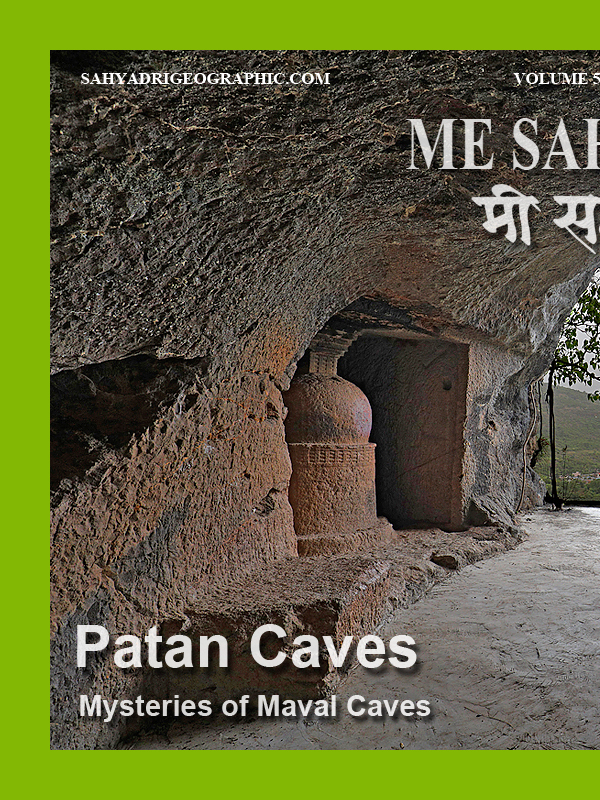 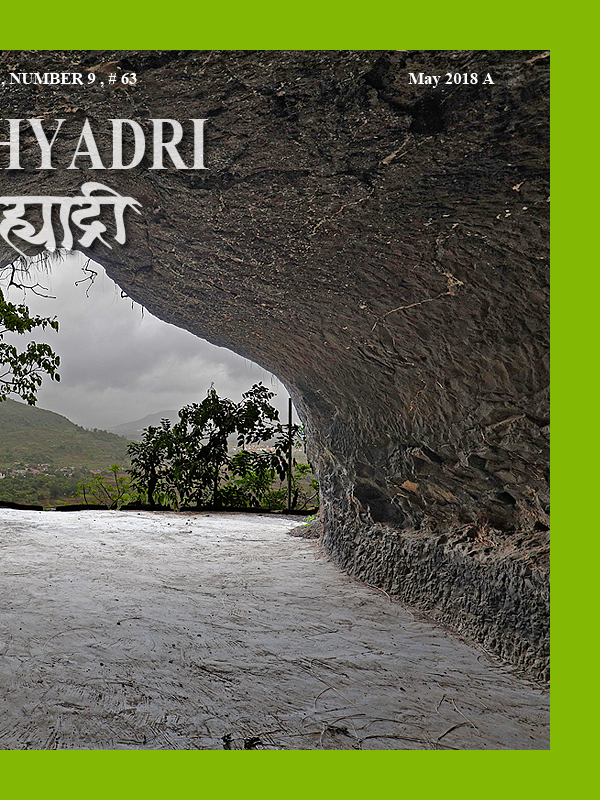
|
| |
| Me Sahyadri – May 2018 - A
|
| |
|
|
मावळ लेणी मोहेमेचा सारांश :
मावळातील भाजे, बेडसे आणि कार्ले लेणी अप्रतिम आहेत. त्यामुळे या भागातील इतर लहान लेण्यांकडे फारसे कोणी फिरकत नाही. आम्ही चार समविचारी मित्रांनी मात्र या हरवलेल्या लेण्यांची शोधाशोध करण्याचे ठरवले. साईप्रकाश बेलसरे, निनाद बारटक्के, अमेय जोशी आणि विवेक काळे असा संघ तयार झाला. एकोणीसाव्या शतकात जेम्स बर्जेस आणि जेम्स फर्ग्युसन या दोन इंग्रज विद्वानांनी भारतातील लेणी धुंडाळली. त्यांनी १८८० साली "केव्ह टेम्पल्स ऑफ इंडिया" या पुस्तकाचे प्रकाशन केले. या पुस्तकात मावळातील लहान लेण्यांचा फारसा तपशिल नसला तरी, या मावळातील इतर लहान लेण्यांबद्दल ५-६ वाक्यांमध्ये आम्हाला त्रोटक का होईना माहिती मिळाली. त्यांनी उल्लेख केलेली, काही ठिकाण सापडली, तर काही ठिकाण काहीही केल्या सापडेनात. कदाचित न सापडलेली ठिकाण नष्ट झाली असावीत. पण मोहिमे दरम्यान नविन, ज्या ठिकाणांचा पुस्तकात उल्लेख नव्हता, पण ग्रामीण भागातल्या स्थानिकांना माहिती होती अशी ठिकाण सापडली.
जेम्स बर्जेस आणि जेम्स फर्ग्युसन या दोन इंग्रज विद्वानांनी लिहिलेल्या प्रत्येक शब्दाचा धागा म्हणुन वापर करायचे ठरले. कामांचे वाटप झाले.
शोध मोहिमेत लागणाऱ्या खाऊची सोय करणे, विषय आणि ठिकाणाचा आधी अभ्यास करणे, प्रवासाची सोय करणे, गावकऱ्यांकडे लेण्यांबद्दल चौकश्या करणे, मोहिमे दरम्यान गचपणातुन वाट शोधणे, लेण्याच्या अवशेषांची मोजमाप घेऊन त्याची चित्रे/नकाशे काढणे, छायाचित्रे काढणे, जि. पि. एस. यंत्रावर वाटेबद्दल माहिती नोंदवणे, लेण्यात लहान बारकावे शोधणे, लेण्यांचे विश्लेषण करणे, नोंदी करणे, अशी वेगवेगळ्या प्रकारची काम वाटुन घेण्यात आली.
प्रत्येक ठिकाणी जाताना, घरचा अभ्यास करावा लागला. जुनी पुस्तके, नकाशे धुंडाळले गेले. गावातल्या मित्रांची मदत झाली. गावागावात चौकश्या केल्या. गडद, लेणे, गुहा, कपार, भोगदा, विहार, पांडवांनी एका रात्री बनवलेली गुहा असे अनेक शब्द वापरुन चौकश्या झाल्या. बहुतेक वेळा असे काही नाही इथे ! तुम्ही कुठुन आलात ? असे उत्तर मिळाले. लेणे आहे का इथे कुठे असा प्रश्न विचारला तर आम्हाला बहुतेकांनी कार्ले/बेडसे/भाजे लेण्यांचा पत्ता दिला. पण बकऱ्या, गाई घेऊन डोंगरात फिरणारे गुराखी मात्र दरवेळेला मदतीला धाउन आले. वाटांचे आणि दिशांचे अंदाज मिळाले. जुजबी माहिती घेऊन ठिकाण शोधणे या प्रकाराचा चांगला सराव झाला. कधी काटेरी करवंदींच्या खालुन खुप सरपटाव लागल तर कधी घसाऱ्यावर हात टेकावे लागले.
लेण्यांमध्ये मोठे कोळी (स्पायडर), कातळ पाली, वटवाघळ, मधमाश्या, पाकोळ्या, घुबडं भेटले. आमच्या मुळे त्यांना उगाच त्रास झाला, असा अपराधीपणा वाटला. प्रत्येक शोधमोहिमेला यश आलेच असे नाही. काही ठिकाण सापडली नाहीत. तर काही ठिकाण आमच्याच मनाचे खेळ आहेत असे लक्षात आले. बहुतांश ठिकाणी कोणत्या ना कोणत्या प्रकारची जोखिम होती. वटवाघळ, लेण्यातील धुळ, काळोख, मधमाश्या, काटेरी वनस्पती, घसारा, गुहेतील ऑक्सिजन चा अभावआणि इतर न दिसणारे धोके यावर मात झाली. मोहिमेसाठी, विजेऱ्या, जि. पि. एस., मोजपट्या, दोऱ्या, लेजर यंत्र, नकाशे, गुगल मॅप, जाळीच्या टोप्या या सर्व जंत्रीचा उपयोग झाला. एकूण मिळुन २० नविन अपरिचित ठिकाण/वास्तु पहायला मिळाल्या, मावळाचा भुगोल जरा अजुन नीट लक्षात आला. नविन प्रश्न पडले आणि नविन कोडी सोडवयाला मिळाली. तर्क वितर्क झाले. पाटण च्या लेणी पहाताना लेणे क्रमांक २ आणि लेणे क्रमांक ३ पाहण्यासाठी मयुर तिकोने या पाटण गावातल्या ट्रेकर ने अत्यंत मोलाची मदत केली.
|
|
About the Maval Cave exploration :
The main caves in Maval region are so significant that other small hermit caves are often overlooked. We as a team of four like minded friends, decided to explore the Maval region for these small hermit caves. We explored and found few beautiful places. The very concept of creating a hermit cave somewhere high up in the hills is fascinating. These places often are full of tranquility and nothing else. With very little architectural evidences and clues, the academicians have obviously ignored these places. It was James Fergusson and James Burgess, during their exhaustive study of “Cave temples of India, 1880” mentioned few of these hermits in Maval region of Pune district. With the little clues and exhaustive investigation, team of four members, Saprakash Belsare, Amey Joshi, Ninad Bartakke and Vivek Kale started the exploration. The journey to locate, trek and analyse these hermit caves itself was fascinating. We met many villagers who were unaware of these places, but also met few shephards who were precisely aware of the hermits and gave us tentaive guidance.
There is a very brief mention about the misceleneous caves of Maval by James Fergusson and James Burgess in their work. Based on available information we decided to search these caves and monuments. The activities were planned. The food, travel , track exploration in difficult and routes full of foliage, enquiring the villagers about the caves, taking measurements and drawing skecthes and maps, photography, GPS data collection, making notes and analysing the information, observing the minor details of the caves etc activites were distributed amongst the team members. We met many bats, owls, geckos, lizards, large spiders, martins, honeybees during the treks. Often we felt sad that we disturbed them to see the caves. Most of these places are hazardous due to pitch darkness, bats, dust, thorny plants, honeybees, low oxygen level in caves and rock patches etc. Not all the attemps were successful. Sometimes we could not find the intended places and sometimes we realised that the cave was just our imagination and did not exist. Nevertheless we saw about 20 new strange caves/monuments during the exploration. The high intensity torches, GPS tool, measuring tapes and measuring laser tool, Honeybee protection caps, maps, google maps, photographs etc were useful during the mission.
On this photoessay, I have compiled the information and photographs of Patan Caves in Maval, amazing, simple but questions-thrower caves. We were helped by Mayur Tikone, the enthusiastic trekker from Patan village mainly to access cave #2 and cave #3
|
|
|
| |
  |
| The banner has been published here to improve the awareness of the trekkers and tourists visiting the various mountain forts, mountains in north western ghats. Please avoid accidents, by following good outdoor ethics such as no swimming in cisterns at mountain forts, no rock climbing without proper technical equipment and expertise. Please do not adventure, trek with any group or individually without understanding the risks associated. The frequency of the solo trekker fatalities have increased recently. Please strictly avoid solo treks. Please also avoid treks to mountains in large commercial groups, as it leads to damage to biodiversity of these high elevation ecological islands. Please respect the wildlife and biodiversity of the region. This has become more important as the ever increasing human interference is leading to severe damage to fragile ecosystems. Please be aware of the wildlife and biodiversity of the mountains before visiting these mountains. Please follow outdoor ethics. Follow ASI and Forest department rules. The concept of use of symbols for outdoor ethics was conceived and designed by "Sahyadri Trekker Bloggers Group". |
| |
|
|
| |
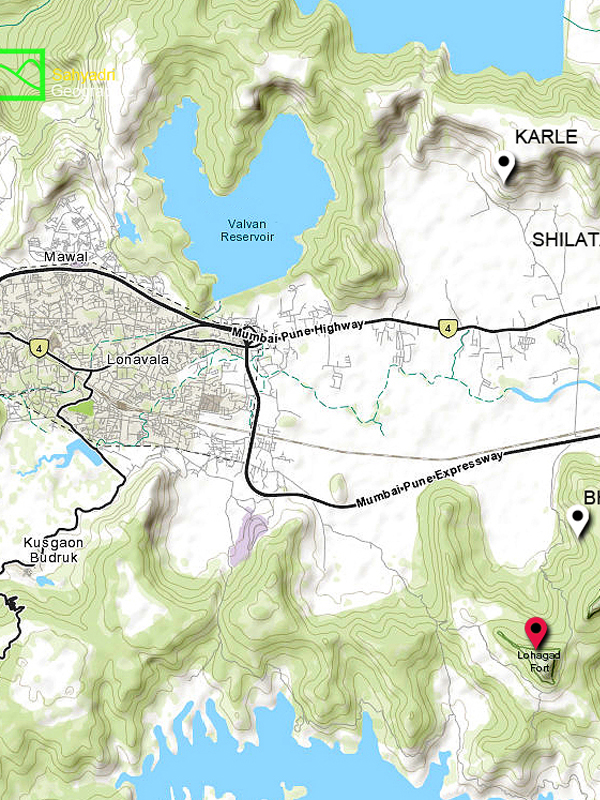  |
| |
| 1. Patan cave, Maval Tehsil, Pune district, Maharashtra, India |
| |
|
|
महाराष्ट्रातील पुणे जिल्ह्याच्या मावळ तालुक्यात पाटण नावाचे गाव वसलेले आहे. दक्खन च्या पठारावर सह्याद्रीच्या एका डोंगररांगेच्या कुशीत हे गाव वसलेले आहे. ही विसापुर डोंगररांग पश्चिम घाटातील कुरवंडे गावापासुन पूर्वेला घोरावाडी डोंगरापर्यंत ३५ किमी पसरलेली आहे. विसापुर डोंगररांगेत, भाजे लेणी, बेडसे लेणी, लोहगड किल्ला, विसापुर किल्ला आणि शेलारवाडी लेणी या महत्वाची वारसा स्थळ आहेत. विसापूर डोंगररांगेच्या उत्तरेस समांतर कार्ले डोंगररांग आहे. कार्ले डोंगररांग पश्चिम-पूर्व पसरलेली आहे. याच रांगेत कार्ले लेणी आहेत. कार्ले डोंगररांग लोणावळेच्या उत्तरेस पश्चिम घाटापासुन पूर्वेकडे वाळख गावापर्यंत, १३ कि मी पसरलेली आहे.
|
|
Patan is a village in Maval tehesil in Pune district in the state of Maharashtra in India. The village is located at the base of the one of the Sahyadri hill ranges on the Deccan plateau. Spread in west–east orientation, this hill range, which is about 35 kilometer in length, spread from the Kurwande village at western ghat ridge, south of Lonavala up to the village Shelarwadi hills towards east. Visapur fort, Lohgad forts, Bhaje Caves and Bedse caves are located in this hill range. This hill range is refered as Visapur range in this photoessay. Further to the north, another west-east oriented hill range spreads over about 13 kilometer, from western ghat main ridge up to the Walakh towards east. This hill range has important archaeological site at Karle. This hill range is refered as Karle range in this photoessay.
|
|
|
| |
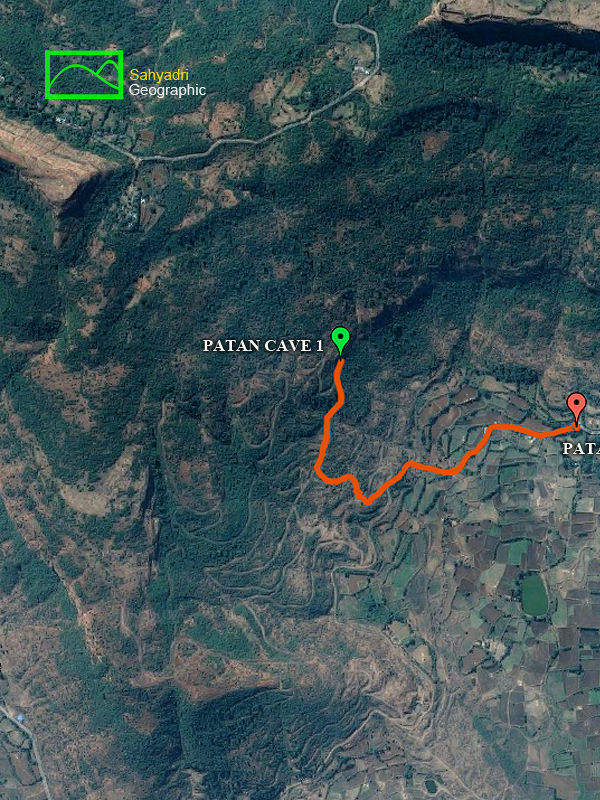 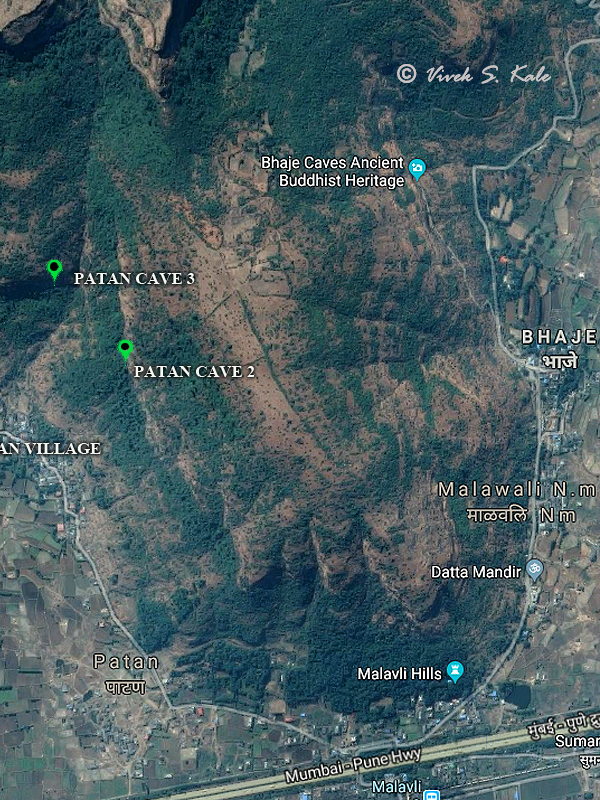 |
| |
| 2. Patan cave map, Maval Tehsil, Pune district, Maharashtra, India |
| |
|
|
कार्ले आणि विसापुर डोंगररांगांच्या मध्ये असलेल्या पठारी प्रदेशातुन इंद्रायणी नदी वाहते. इंद्रायणी पश्चिमेकडुन पूर्वेकडे वाहते. प्राचीन व्यापारी मार्ग या भागातुन इंद्रायणी खोऱ्यातुन जातो. हा प्राचीन व्यापारी मार्ग कोकणातल्या कल्य़ाण, सोपारा या बंदरांपासुन दक्खन च्या पठारावरच्या पैठण, तेर या गावांना जोडत होता. आज याच भागातुन मध्य रेल्वे आणि मुंबई-पुणे राष्ट्रीय मार्ग जातात.
|
|
Between Karle range and Visapur range, Indrayani river flows from west to east, and the plateau is called as Indrayani basin in this note. Indrayani river originates in the hills around Lonavala. The ancient trade route climbs up the western ghat ridge from the Konkan over to the Deccan plateau at Lonavala. Once atop Deccan plateau at Lonavala, the trade route is aligned parallel to Indrayani river. This ancient trade route was to transport the goods from the eastern economic centres on the Deccan plateau to Kalyan and Sopara ports on the western coast of India. Today the modern Mumbai-Pune road and Central railway line passes through the same Indrayani river basin, was used for ancient trade in the past.
|
|
|
| |
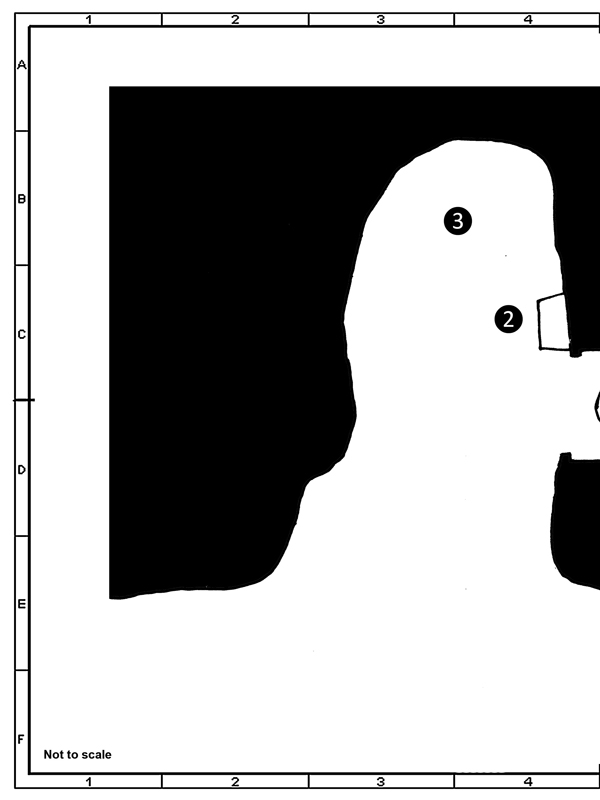 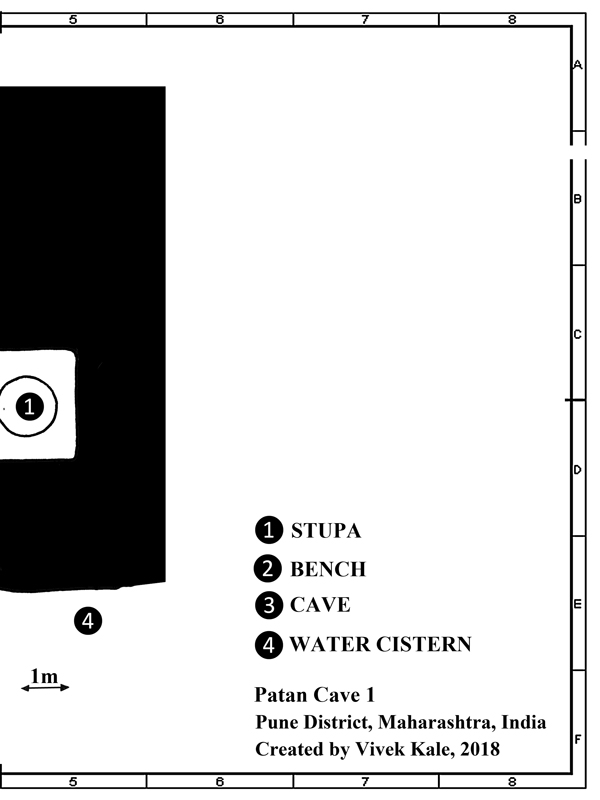 |
| |
| 3. Patan cave map, Maval Tehsil, Pune district, Maharashtra, India |
| |
|
|
पाटण गाव विसापूर डोंगर रांगेच्या उत्तरेकडील बाजूला डोंगर कुशीत वसलेले आहे. भाजे गावाच्या पूर्वेला डोंगराच्या पलीकडे आणि पुणे मुंबई रेल्वे मार्गावरील मळवली स्थानकापासून अंदाजे १.५ किलोमीटर अंतरावर पाटण गाव आहे. या गावाचे अंतर लोणावळे पासून १३ किलोमीटर तर पुण्यापासून ६० किलोमीटर आहे. पाटण गावातून विसापूर किल्यावर जाण्याचा मार्ग आहे. या वाटेने किल्याच्या उत्तर दरवाज्यापर्यंत वाट आहे. पाटण गावाजवळ डोंगरात तीन ठिकाणी लेणी आहेत. तीन ठिकाणची लेणी एकमेकापासून दूर आहेत. पाटण चे लेणे (क्रमांक १), गावाच्या आग्नेय दिशेला अंदाजे १०० मीटर डोंगर चढाई नंतर आहे. लेणे (क्रमांक १) मध्ये स्तूप आहे. पाटण चे लेणे (क्रमांक २), गावाच्या पूर्वेला अंदाजे ५० मीटर डोंगर चढाई नंतर डोंगर कड्यात आहे. लेणे (क्रमांक २) मध्ये एक विहार आहे. याठिकाणी भिंतीत कोरलेला एक स्तूप आहे. कड्यावर असल्यामुळे येथे पोहोचणे अवघड आहे. पाटण चे लेणे (क्रमांक ३), गावाच्या दक्षिणेला अंदाजे ७० मीटर डोंगर चढाई नंतर, एका पावसाळी ओढ्याजवळ डोंगर कड्यात आहे. विसापूर किल्याच्या उत्तर व दक्षिण दरवाज्यांजवळ काही गुहा आणि पाण्याची टाकी आहेत. पाण्याच्या टाकयांवर ब्राह्मी शिलालेख आणि बुद्ध चिन्हे आहेत. सातवाहनांच्या काळातले, इसवीसन नंतर दुसऱ्या शतकातले हे शिलालेख आहेत. विसापूरचा कार्ले, भाजे, बेडसे लेण्यांशी संबंध होता.
|
|
Patan village is located on the northern base of Visapur hill range east of Bhaje, close to the modern Mumbai-Pune Express highway (NH4) and Central railway line. The village is located at about 13 kilometer from Lonavale town. It is located at about 60 kilometer from Pune city-centre. Patan is located at the base of the Visapur fort and is located on the trail to Visapur fort from the base. There are three known cave locations in the hill around Patan village, all in different directions. The most prominent cave with Stupa (Cave number 1) is located south east, of the village in the scarp at about 100 meter above village level, and is easily accessible from the village by a hill trail. Another prominent cave with a partially completed Stupa in the relief (Cave number 2) is located west, of the village in the vertical scarp at about 50 meter above village level, and is not easily accessible. The least known unfinished cave work (Cave number 3) is located at about 70 meter above the village level on the south side of the village high up near the main stream near a natural cavern. There are also few caves high up on the Visapur fort at the north and south entrances, with few water cisterns with 6 Brahmi inscriptions from second century AD. These water cisterns indicate the association between the Satvahan rulers at the fort and the Buddhist monks, monasteries such as Bhaje, Bedse and Karle.
|
|
|
| |
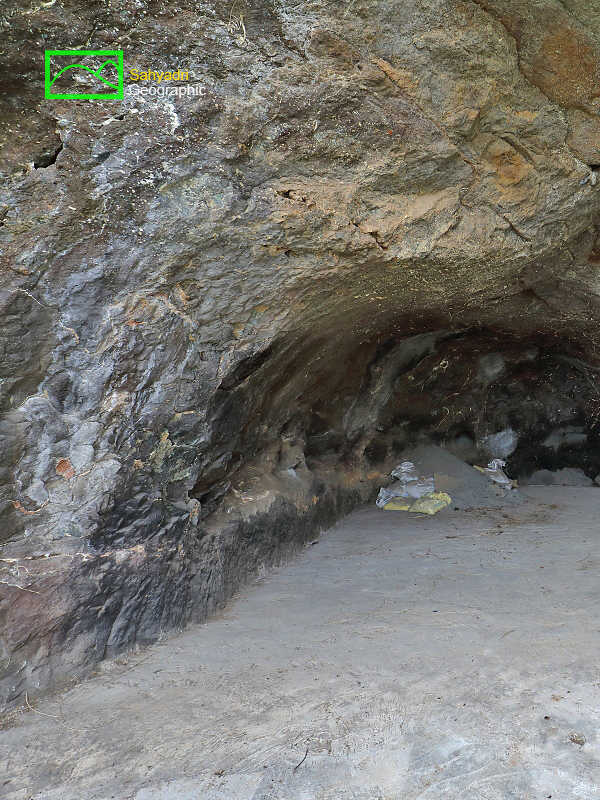 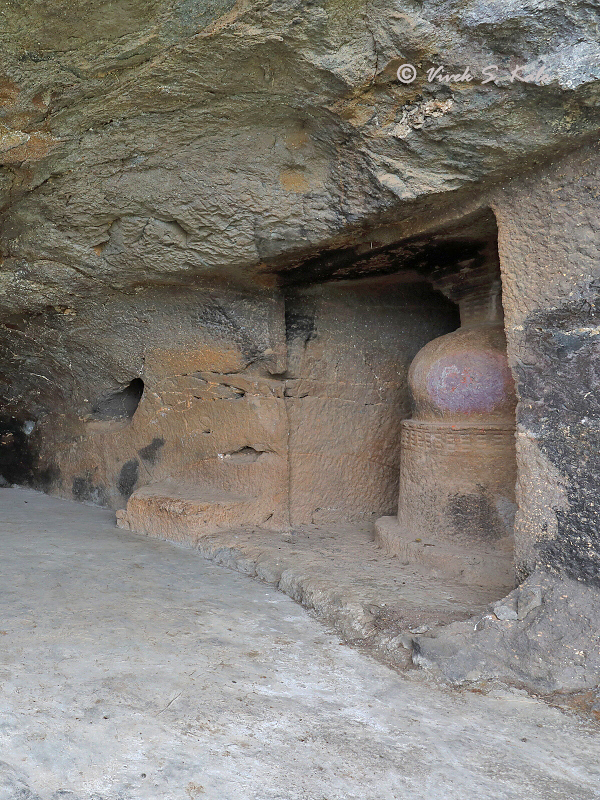 |
| |
| 4. Patan Cave # 1, Maval Tehsil, Pune district, Maharashtra, India |
| |
|
|
पाटण ची लेणी क्रमांक १ : पाटण चे लेणे (क्रमांक १), गावाच्या आग्नेय दिशेला अंदाजे १०० मीटर डोंगर चढाई नंतर आहे. लेणे (क्रमांक १) मध्ये स्तुप आहे. हे लेणे म्हणजे मुळचे नैसर्गिक कपार लेणे आहे. नैसर्गिक लेण्याला थोडे वळण देऊन येथे लेणे तयार केले आहे. अशा प्रकारचे लेणे मावळात इतरत्र साई, खडकवाडी, शिलाटणे, वाळख आणि येळघोळ येथे आढळते. या सर्व ठिकाणी मुळ नैसर्गिक कपारीत लेणे बनविले आहे. पाटण च्या लेण्यांचा आकार अंदाजे ९.७ मीटर लांब, २ ते ३ मीटर रुंद आणि अंदाजे २.४ मीटर उंच आहे. या लेण्यात पश्चिम बाजूला एक स्तुप आहे. एका आयताकृती खोलीत हा स्तुप कोरलेला आहे. या लहान चैत्यगृहात जमिनीवर आणि भिंतींवर खांब किंवा वासे रोवण्यासाठी केलेले खळगे दिसतात. या चैत्यगृहाला समोरच्या दर्शनी भागात लाकडी चौकट, दरवाजा असावा. स्तुप आकाराने १.३ मीटर व्यासाचा आणि २.४ मीटर उंच आहे. स्तुपावर वेदिका कोरलेली आहे. स्तुपाची हर्मिका छतापर्यंत असुन ती छताशी एक जीव आहे. लेण्यांबाहेर पश्चिमेला एक छोटे पाण्याचे टाके असल्यासारखा खळगा आहे. हे पाण्याच्या खळग्याचे उत्खनन नुकतेच झालेले दिसते. स्तूपाजवळ लेण्यात एक लहान दगडी बाकी आहे. एका माणसाला मांडी पाय घालुंन बसुन, भिंतीला पाठ टेकवुन ध्यान करता येईल अशी या बाकाची रचना आहे.
|
|
Description of Cave number 1: The most prominent cave with Stupa (Cave number 1) is located south east, of the Patan village in the scarp at about 100 meter above village level, and is easily accessible from the village. The cave is a small natural cave modified by chiselling to house a stupa, an open space with a bench. The cavern is about 9.7 meter in length and about 2 to 3 meter in width. The height is about 2.2 meter. On one side there is a rectangular chamber which houses a stupa. The rectangular chamber is about 2.7 meter x 2.3 meter in plan area with 2.4 meter total height. There is a stupa in this rectangular chamber. The chamber seems to have few post holes on the walls as well at the front opening. There must have been a wooden wall with a door infront, making the rectangular chamber a small chaityagriha. The stupa is about 1.3 meter in diameter and has a typical rail pattern (vedika) on it. The Hermika has five tiles and is integrated with the ceiling. Outside the cave on west side there is a recent excavation of what looks like a water cistern. The water cistern is not very well carved. Inside the cave on inner side of the Stupa chamber, there is a small simple bench with wall as backrest, just wide enough for one person to sit and contemplate.
|
|
|
| |
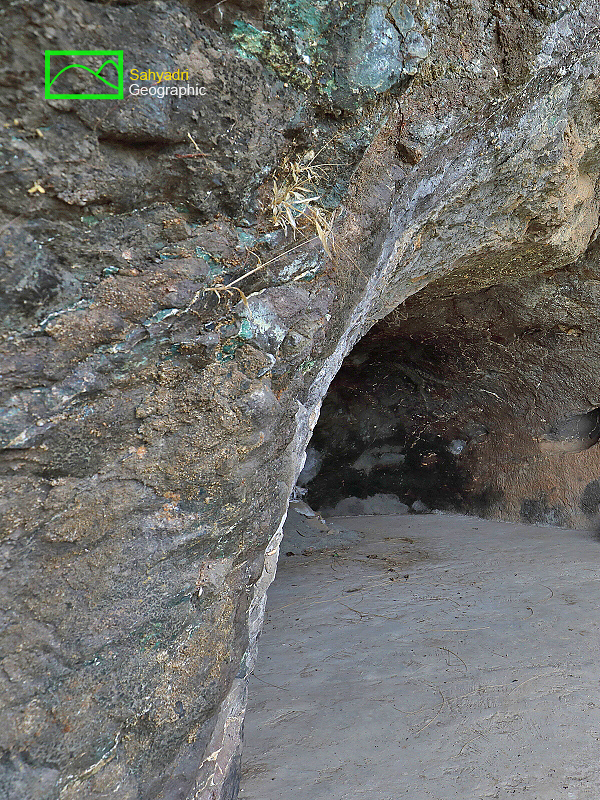 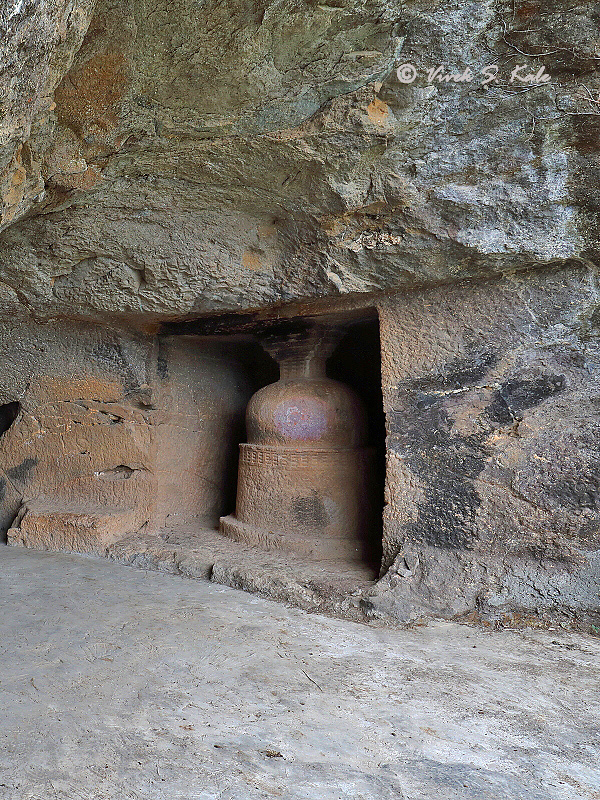 |
| |
| 5. Patan Cave # 1, Maval Tehsil, Pune district, Maharashtra, India |
| |
|
|
| |
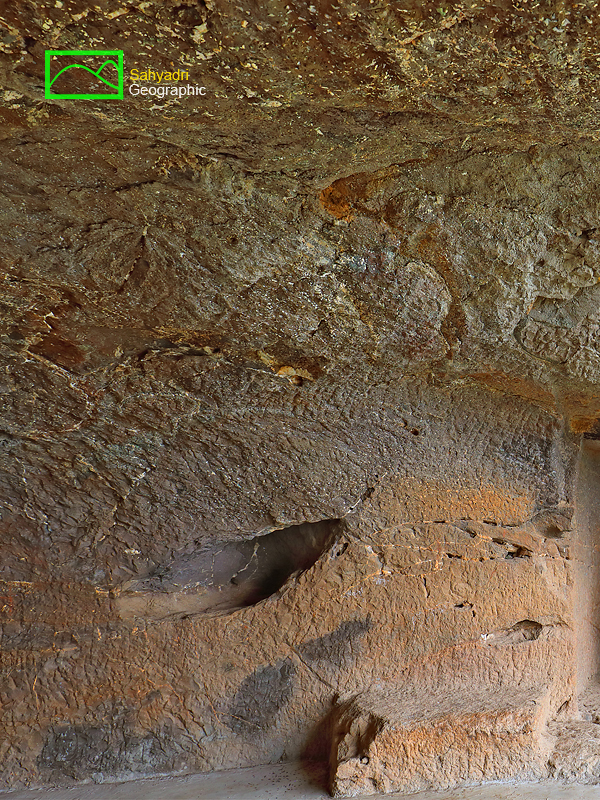 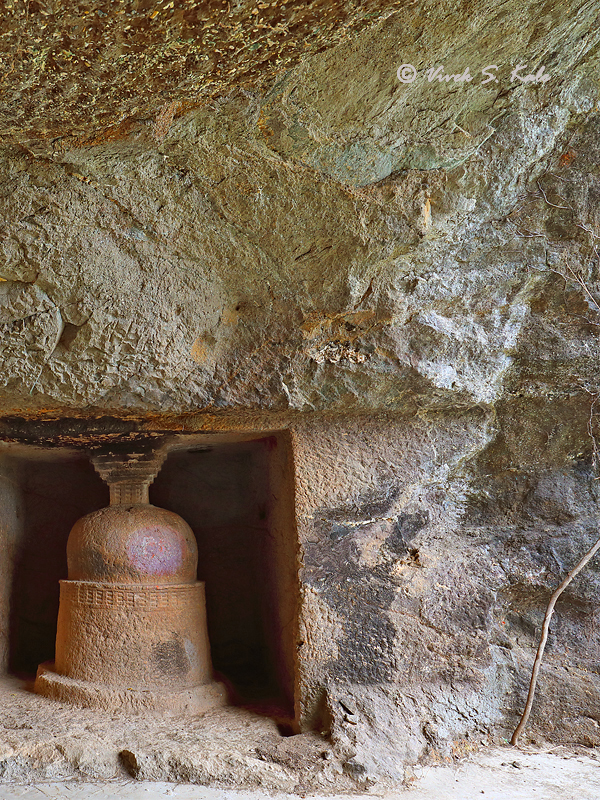 |
| |
| 6. Patan Caves # 1, Maval Tehsil, Pune district, Maharashtra, India |
| |
|
|
| |
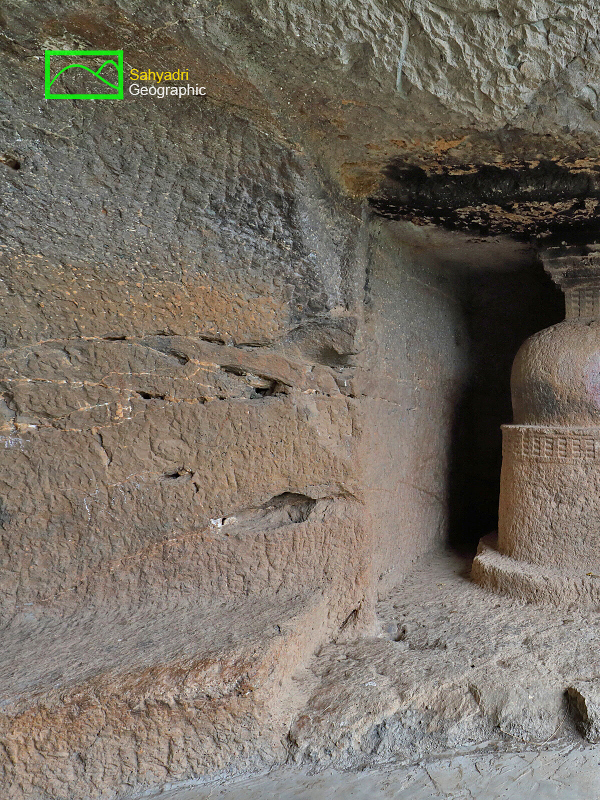  |
| |
| 7. Patan Cave # 1, Maval Tehsil, Pune district, Maharashtra, India
|
| |
|
|
| |
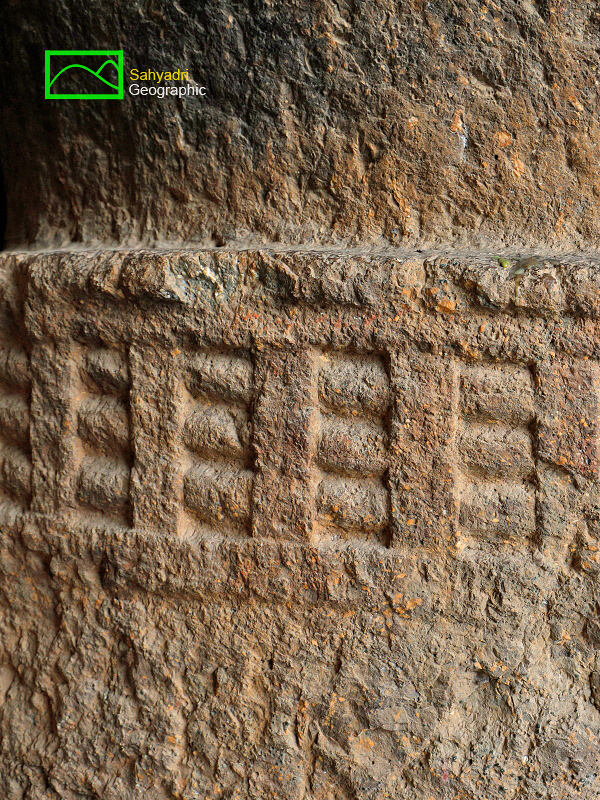  |
| |
| 8. Patan Cave # 1, Maval Tehsil, Pune district, Maharashtra, India |
| |
|
|
| |
 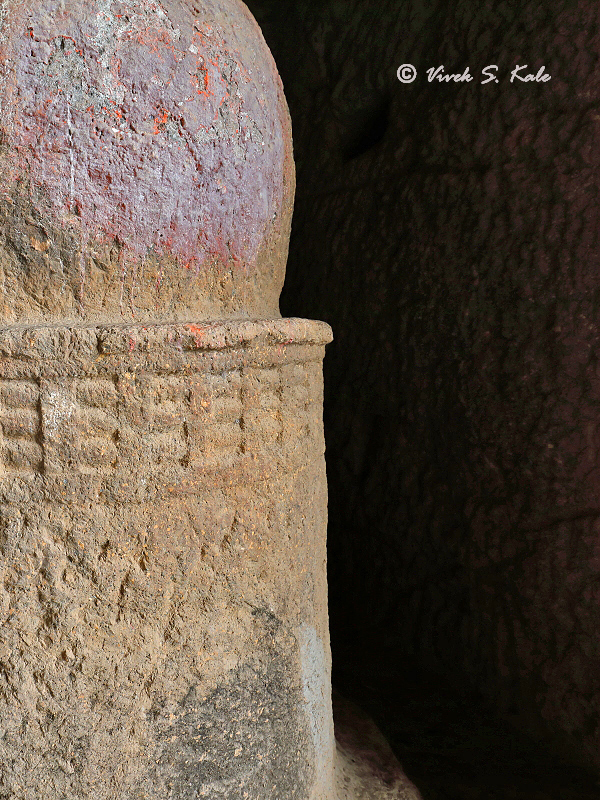 |
| |
| 9. Patan Cave # 1, Maval Tehsil, Pune district, Maharashtra, India |
| |
|
|
| |
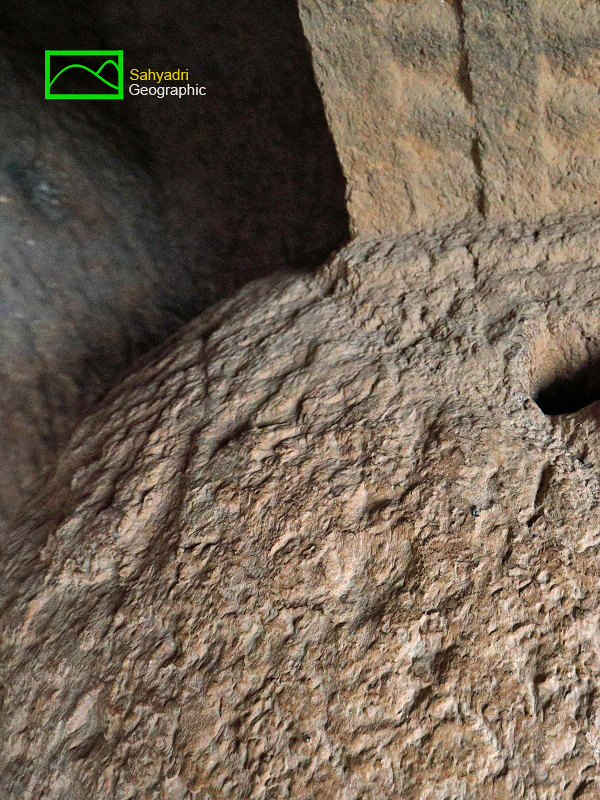 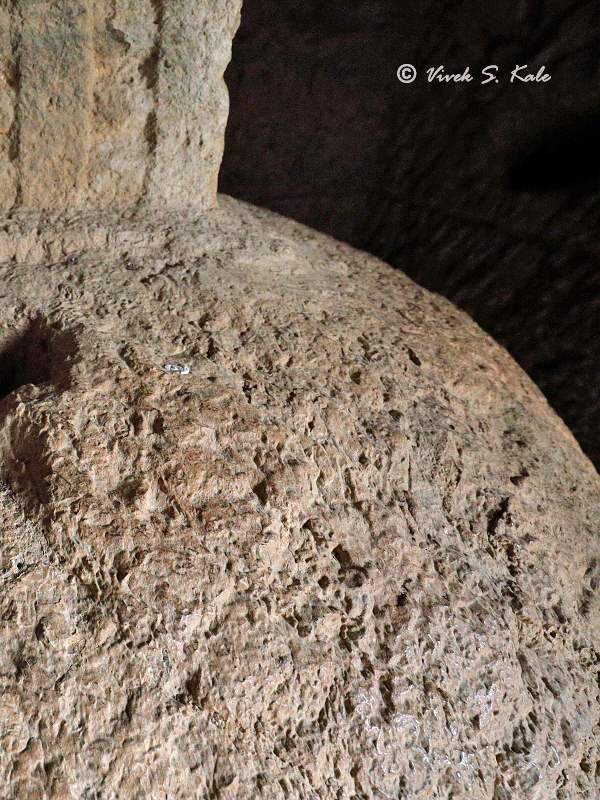 |
| |
| 10. Patan cave # 1, Maval Tehsil, Pune district, Maharashtra, India |
| |
|
|
| |
  |
| |
| 11. Patan cave # 1, Maval Tehsil, Pune district, Maharashtra, India |
| |
|
|
| |
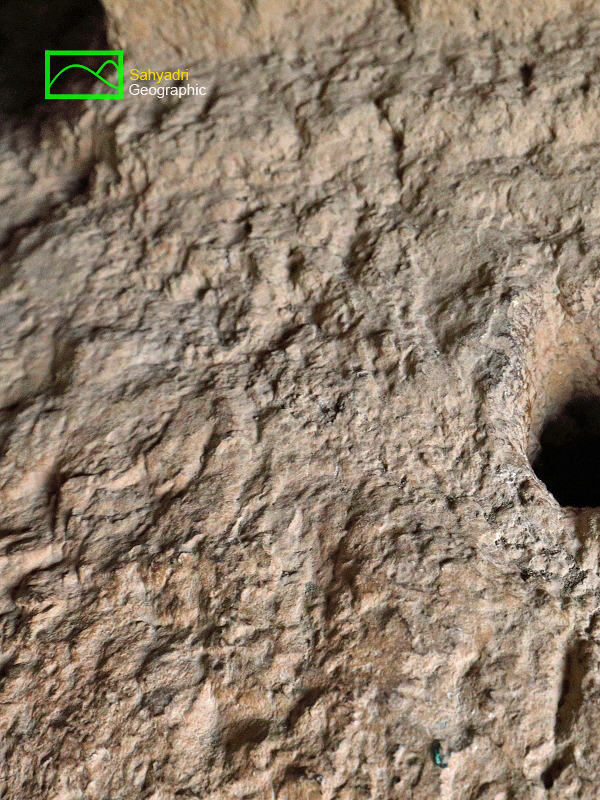 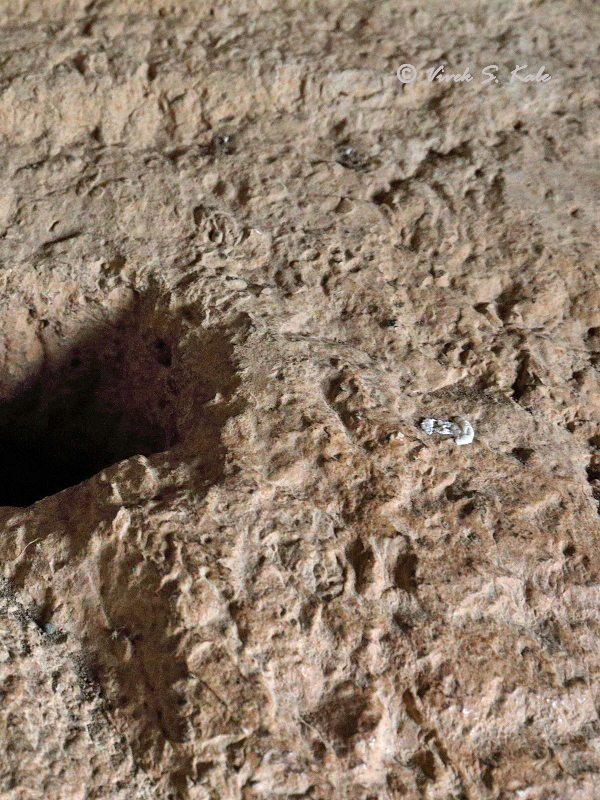 |
| |
| 12. Patan cave # 1, Maval Tehsil, Pune district, Maharashtra, India |
| |
|
|
| |
 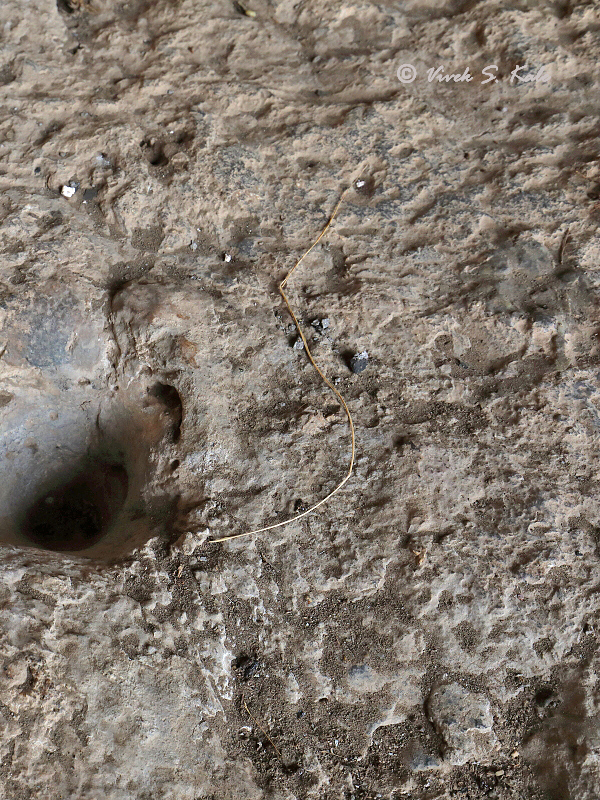 |
| |
| 13. Patan Cave # 1, Maval Tehsil, Pune district, Maharashtra, India |
| |
|
|
| |
  |
| |
| 14. Patan Cave # 1, Maval Tehsil, Pune district, Maharashtra, India |
| |
|
|
| |
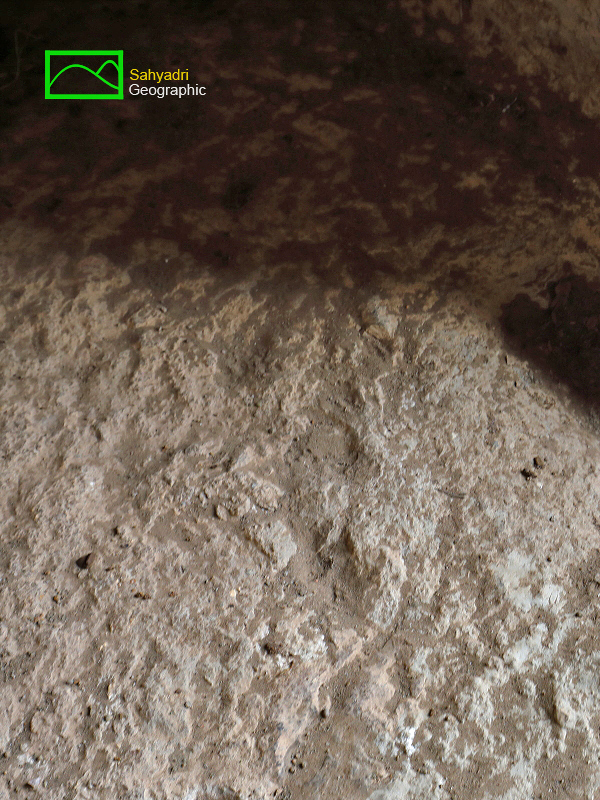 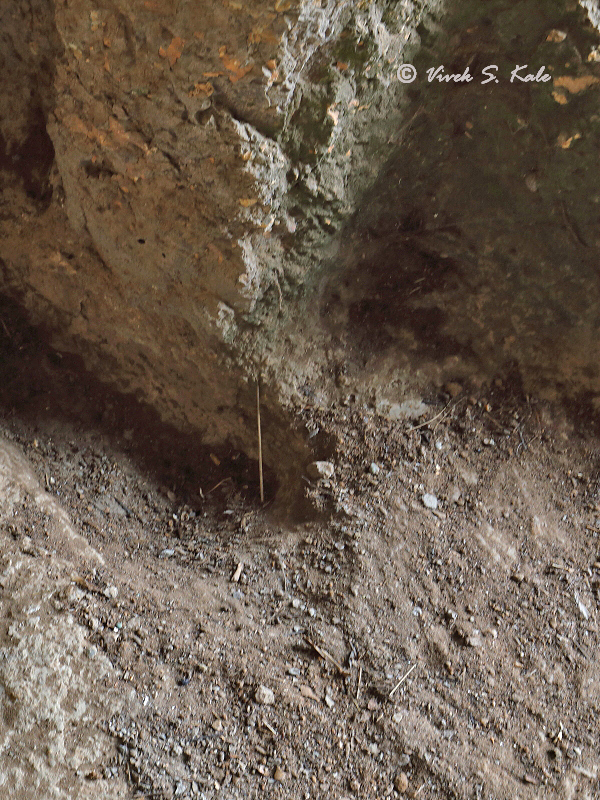 |
| |
| 15. Patan Cave # 1, Maval Tehsil, Pune district, Maharashtra, India |
| |
|
|
| |
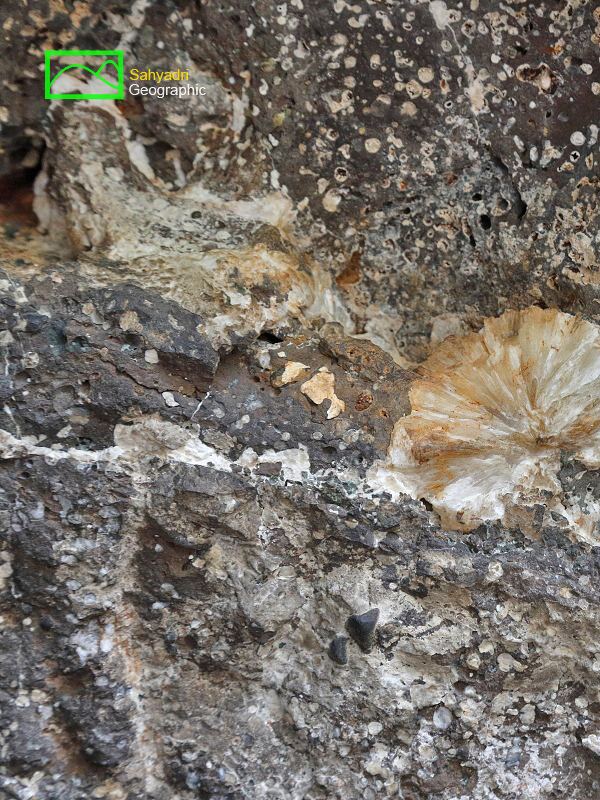  |
| |
| 16. Patan Cave # 1, Maval Tehsil, Pune district, Maharashtra, India |
| |
|
|
| |
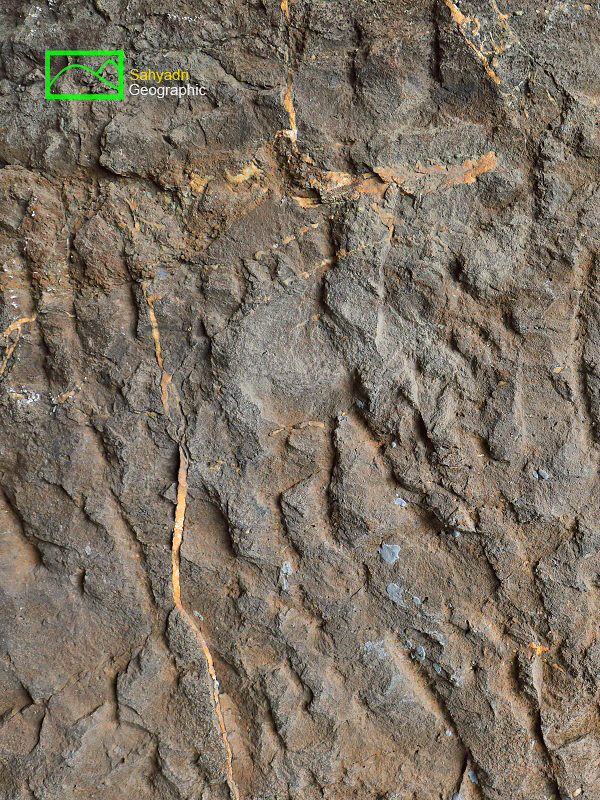  |
| |
| 17. Patan Cave # 1, Maval Tehsil, Pune district, Maharashtra, India |
| |
|
|
| |
 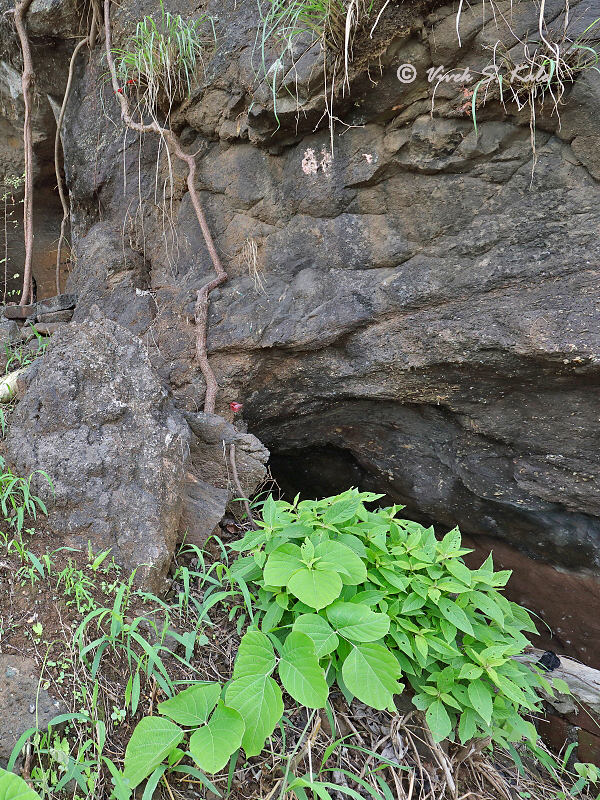 |
| |
| 18. Patan Cave # 1, Maval Tehsil, Pune district, Maharashtra, India |
| |
|
|
| |
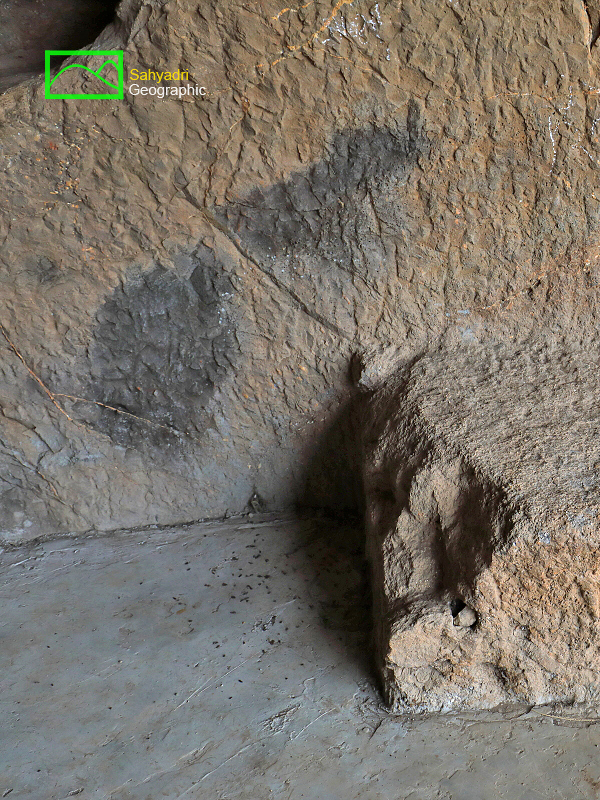 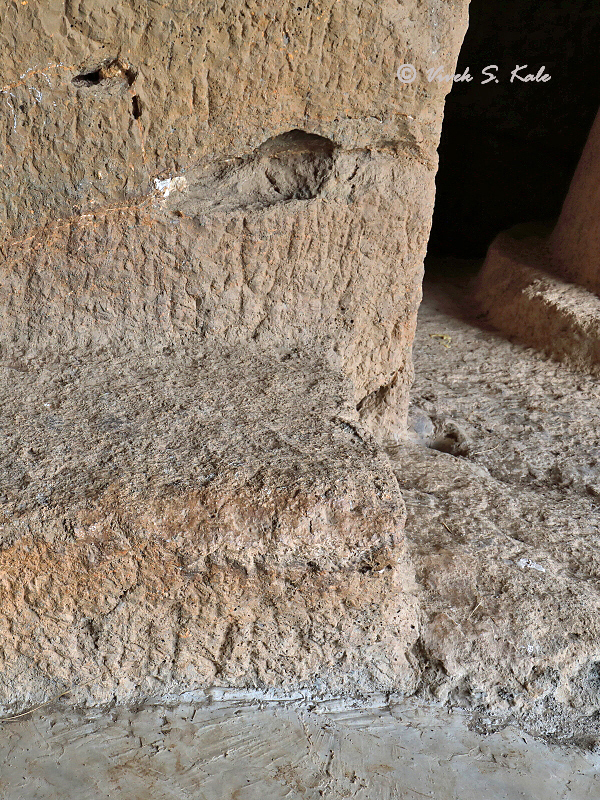 |
| |
| 19. Patan Cave # 1, Maval Tehsil, Pune district, Maharashtra, India |
| |
|
|
| |
 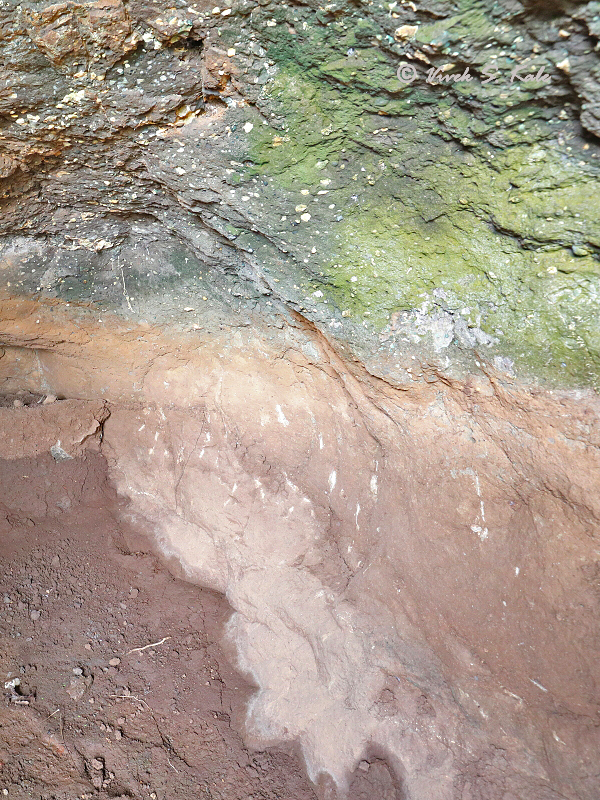 |
| |
| 20. Patan Cave # 1, Maval Tehsil, Pune district, Maharashtra, India |
| |
|
|
| |
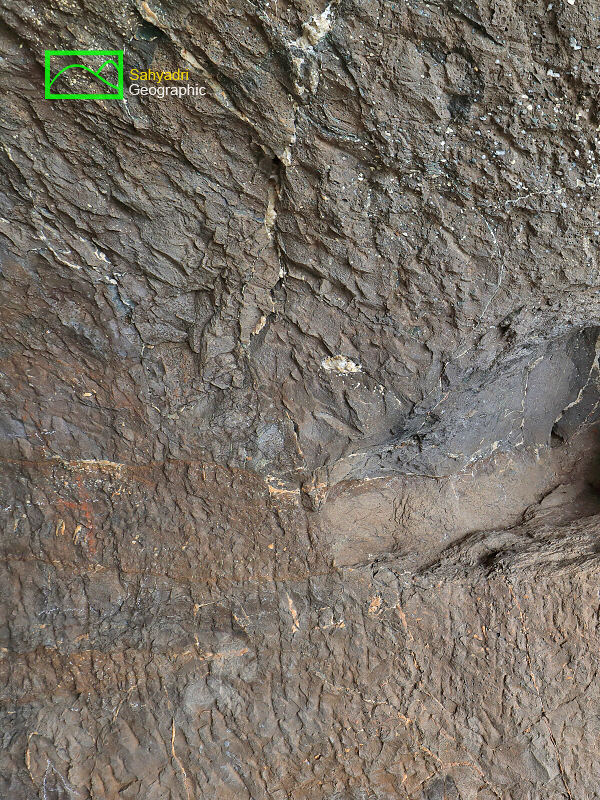  |
| |
| 21. Patan Cave # 1, Maval Tehsil, Pune district, Maharashtra, India |
| |
|
|
| |
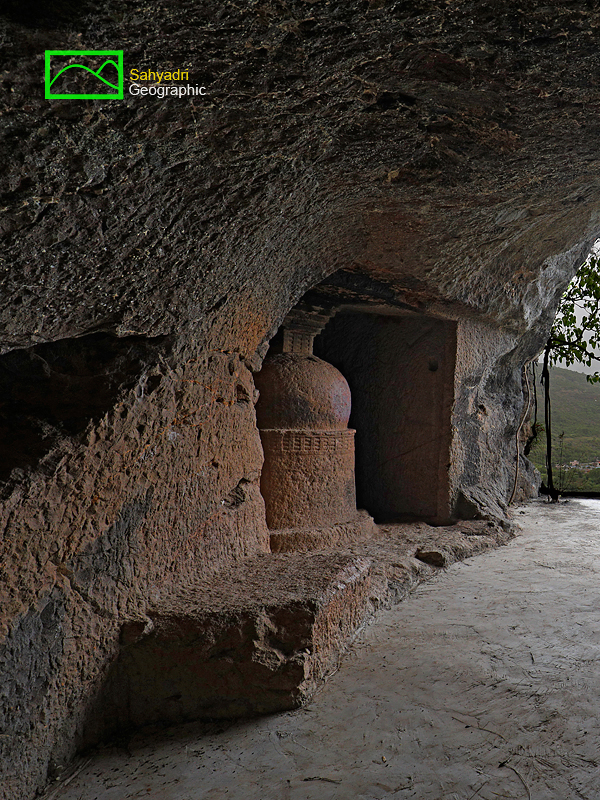 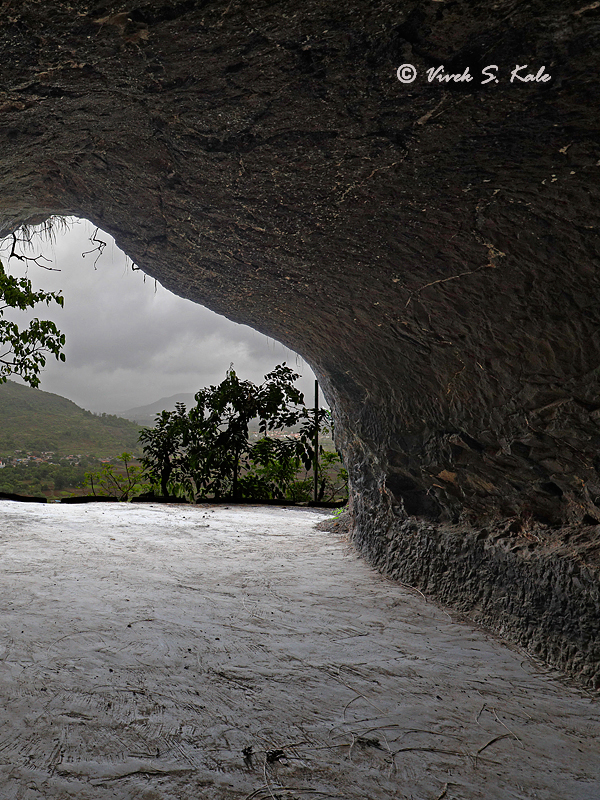 |
| |
| 22. Patan Cave # 1, Maval Tehsil, Pune district, Maharashtra, India |
| |
|
|
| |
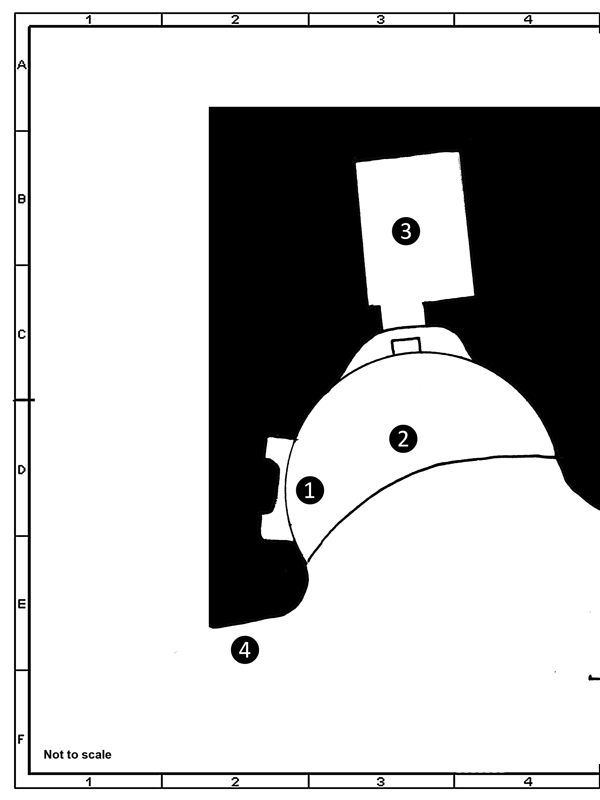 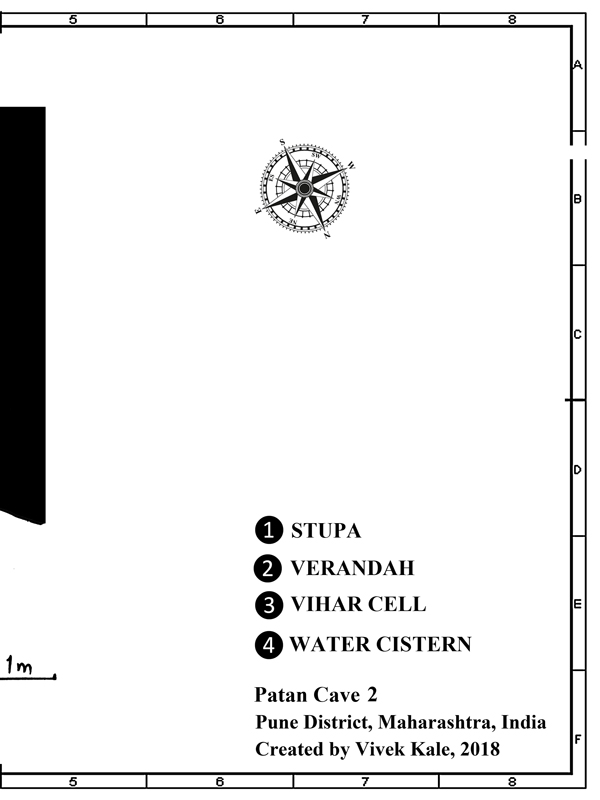 |
| |
| 23. Patan cave # 2, Maval Tehsil, Pune district, Maharashtra, India |
| |
|
|
पाटण लेणे क्रमांक २ : पाटण गावाच्या पश्चिमेस गावालगतच असलेल्या डोंगरावर कड्यावर, गावापासून अंदाजे ५० मीटर उंचीवर पाटण चे २ क्रमांकाचे लेणे आहे. यालेण्याकडे जाताना उभा कडा लागतो. पावसाळ्यात येथे जाता येत नाही. उन्हाळ्यात येथे योग्य पद्धतीने जावे. पाटण लेण्यांप्रमाणे हे लेणे सुद्धा एका नैसर्गिक कपारीचा वापर करून कोरलेले असावे. या भागात अशा असंख्य कपारी पहावयाला मिळतात. लेण्या च्या दर्शनी भागात एक गोलाकार (ज्याचा अर्धा भाग दिसतो.) असे लेणे आहे. याचा व्यास अंदाजे ४. ६ मीटर आहे.
|
|
Description of Cave number 2: The other prominent cave with a Stupa in relief (Cave number 2) is located west, of the Patan village in the scarp at about 50 meter above village level. There is a damage to the trail to this cave. The cave is not easily accessible from the village, and requires careful ascent via a rock patch. One should be careful while visitng this place as there is a direct fall exposure. This cave can only be visited in dry season. The cave is probably a small natural cave modified by chiselling to house a vihar, an open space with a stupa in relief.
|
|
|
| |
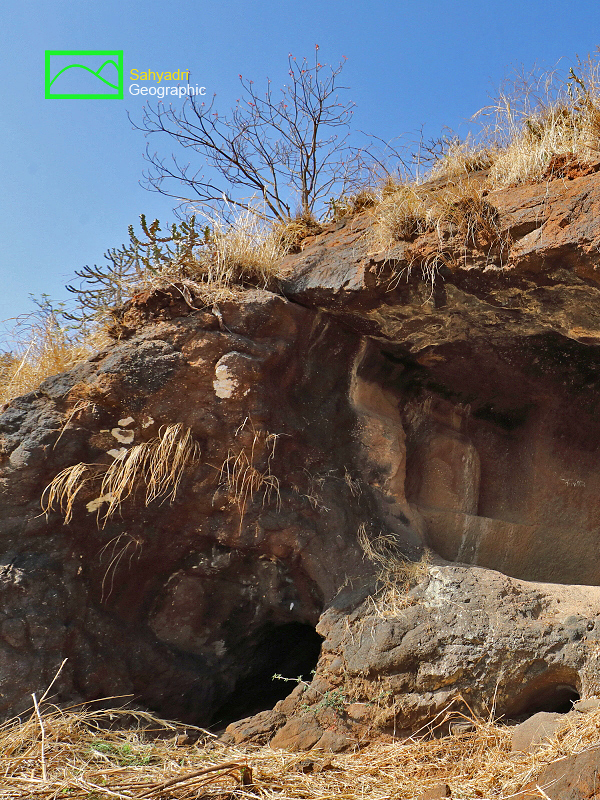  |
| |
| 24. Patan cave # 2, Maval Tehsil, Pune district, Maharashtra, India |
| |
|
|
या दर्शनी व्हरांड्यात जमिनीवर वासे आणि खांब रोवण्यासाठी केलेले खळगे दिसतात. या व्यतिरिक्त येथे दक्षिणेकडच्या भिंतीवर एक कोनाडा केलेला आहे. यात स्तूप कोरलेला आहे. स्तुप व्यवस्थित पूर्ण कोरलेला नाही. यात वेदिका आणि हर्मिका कोरलेली नाही. लेण्यातला स्तुप आकाराने १.१ मीटर उंच तर ०.८५ मीटर रुंद आहे. समोरच्या गोलाकार व्हरांड्याचा अर्धा भाग दिसतो. इतर भागात कदाचित माती टाकून यांच्या मध्ये बांधीव स्तूप असण्याची शक्यात आहे. अथवा असे गोलाकार लेणे बनवण्यामागचे प्रयोजन कळत नाही. मावळात भाजे, बेडसे, येळगोळ, खडकवाडी, शिलाटणे, वाळख येथे असे गोलाकार (दंडगोलाकार) कक्ष आहेत. येथे बांधीव स्तूप असावेत. स्तुप जीवंत दगडात कोरता येतो हे ध्यानात येण्या आधीच्या काळातले हे गोलाकार कक्ष असावेत असे अभ्यासकांचे मत आहे.
|
|
There are remains of a circular chamber of about 4.6 meter diameter (verandah) in front of this cave. Now one can see only 60 % portion of the circular chamber (verandah intact). The rest might have been made by a landfill or have been damaged due to rains. At southern wall of this circular verandah, there is a stupa carved in relief. The stupa is not well made and seems incomplete. Whether there was a structural / wooden stupa in the circular verandah remains a question. The presence of such circular chambers made probably for the structural chambers elsewhere in Maval region at Bhaje, Yelghol, Khadakwadi, Walakh, Shilatane and Bedse indicate that it was a common practice in early period before the cave makers realise that the stupa can be carved out of living rock.
|
|
|
| |
 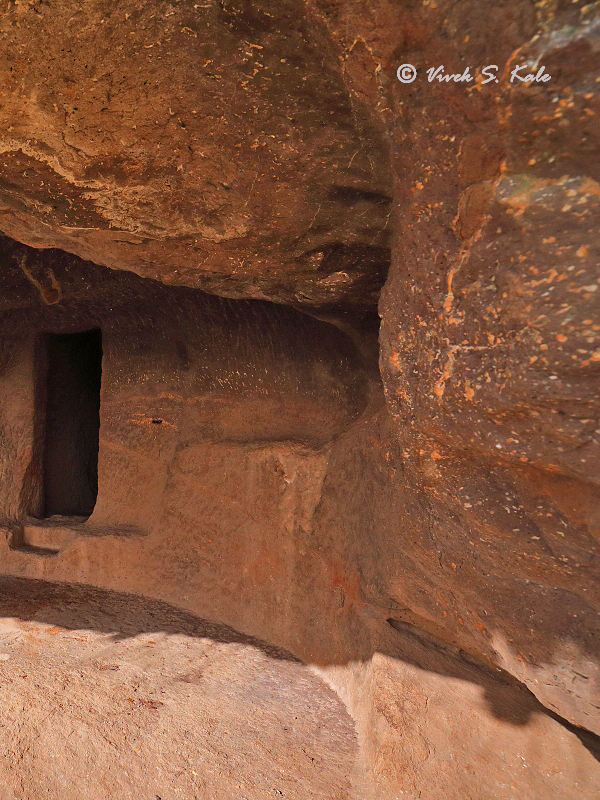 |
| |
| 25. Patan cave # 2, Maval Tehsil, Pune district, Maharashtra, India |
| |
|
|
पाटण चे हे २ क्रमांक लेणे, लेणे क्रमांक १ च्या आधीचे असावे. क्रमांक १ च्या लेण्यात चौकोनी चैत्यगृह आहे. बाक आहे. तर क्रमांक २ च्या लेण्यात बाक नाही आणि बाह्य रचना गोलाकार आहे. या क्रमांक २ लेण्यात आतल्या बाजूला एक विहार आहे. विहाराची लांबी २.३ मीटर, रुंदी १.७ मीटर, आहे. विहारात जाताना एक पायरी आहे. या विहाराच्या दरवाजाला लाकडी चौकट लावण्यासाठी खळगे आहेत.
|
|
The cave number 2 looks like it was probably made before the cave number 1 as the circular verandah indicates. The stupa shape carved in relief on the southern wall of this verandah seems like a later work. There is a vihar (cell) carved in the west side of the circular verandah. The vihar is about 2.3 meter in length and is about 1.7 meter wide. There is no bench in the cell. Outside the cave on southern side there is a excavation of what looks like a water cistern. The water cistern is not very well carved and is similar to what is seen at Cave 1.
The stupa in relief is not complete, and does not have any vedika and chatri carved. The stupa is incomplete and very rough, and looks like a work of a not so professional worker. The height of this unfinished stupa in relief is about 1.1 meter and the width is about 0.85 meter. The total depth of this relief is about 0.6 meter from front. There are few post holes in the verandah.
|
|
|
| |
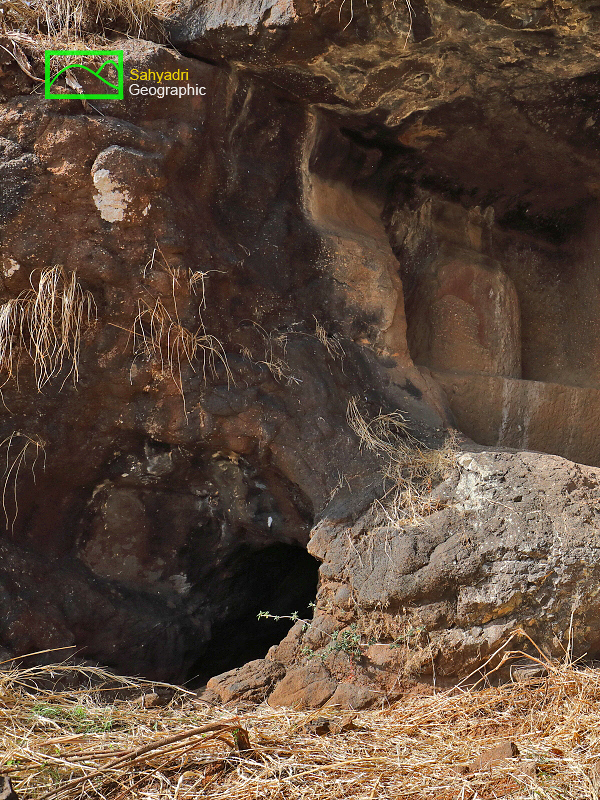 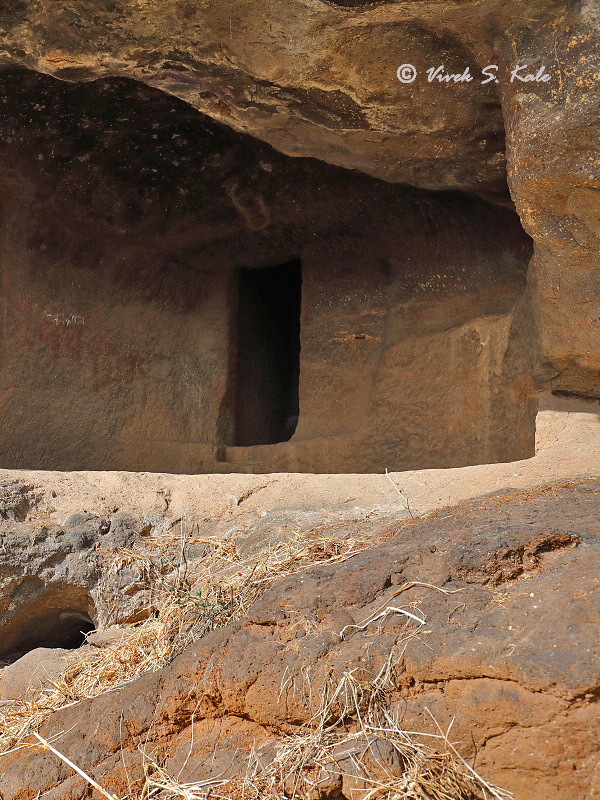 |
| |
| 26. Patan cave # 2, Maval Tehsil, Pune district, Maharashtra, India |
| |
|
|
| |
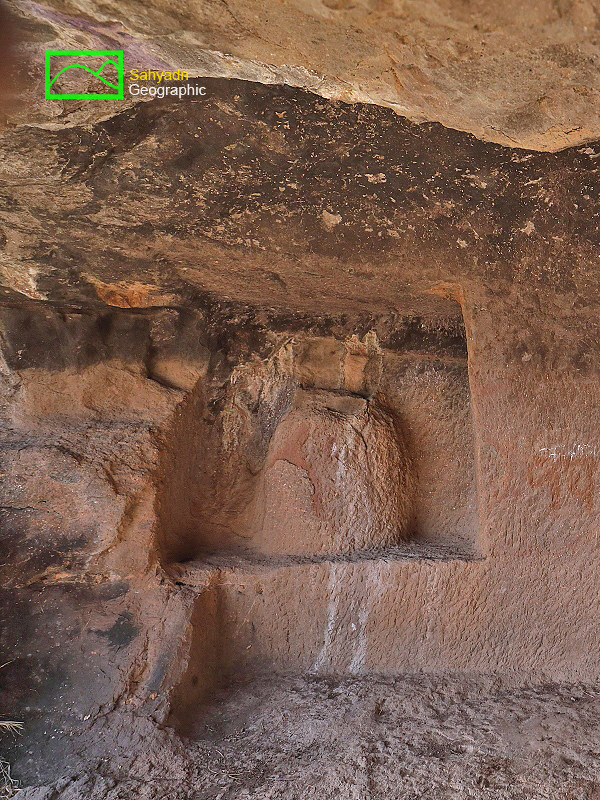 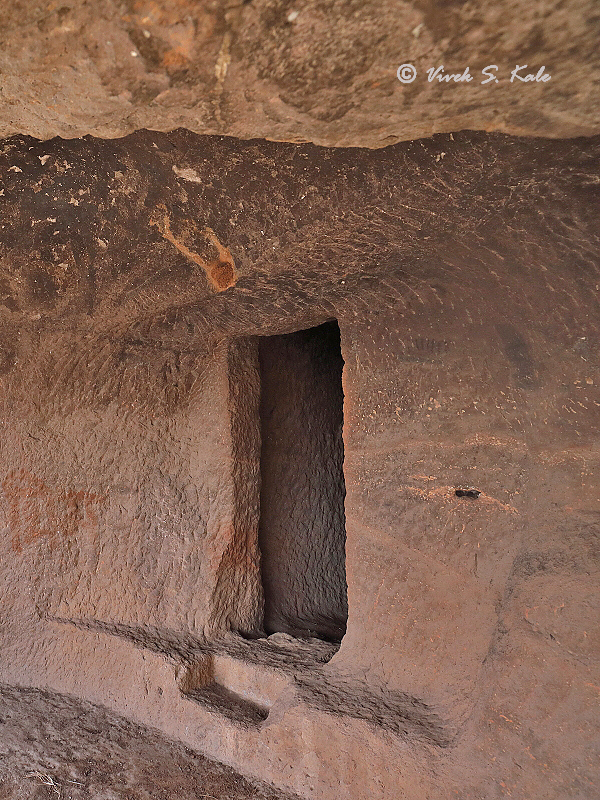 |
| |
| 27. Patan cave # 2, Maval Tehsil, Pune district, Maharashtra, India |
| |
|
|
| |
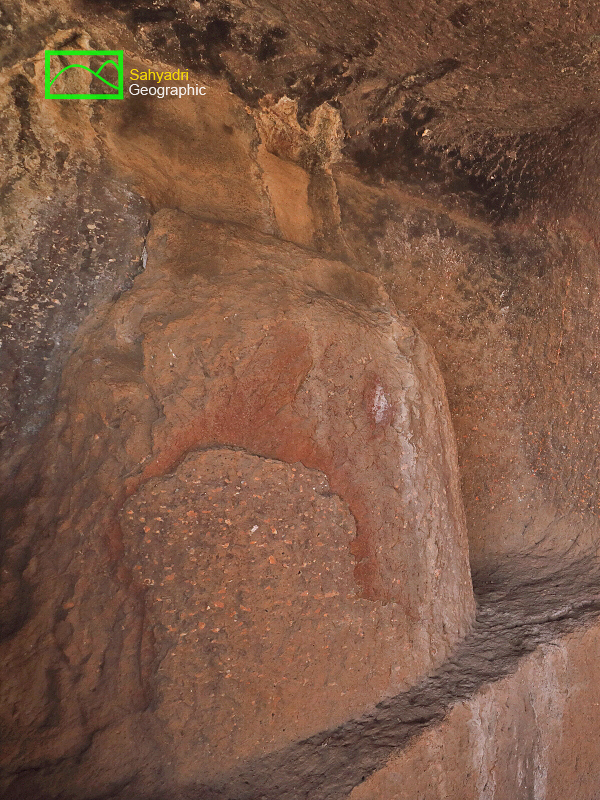 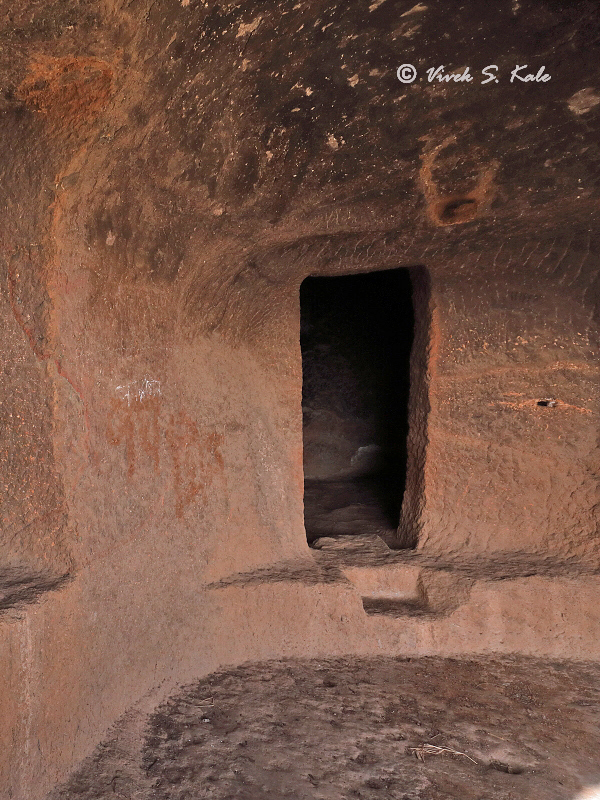 |
| |
| 28. Patan cave # 2, Maval Tehsil, Pune district, Maharashtra, India |
| |
|
|
| |
  |
| |
| 29. Patan cave # 2, Maval Tehsil, Pune district, Maharashtra, India |
| |
|
|
| |
 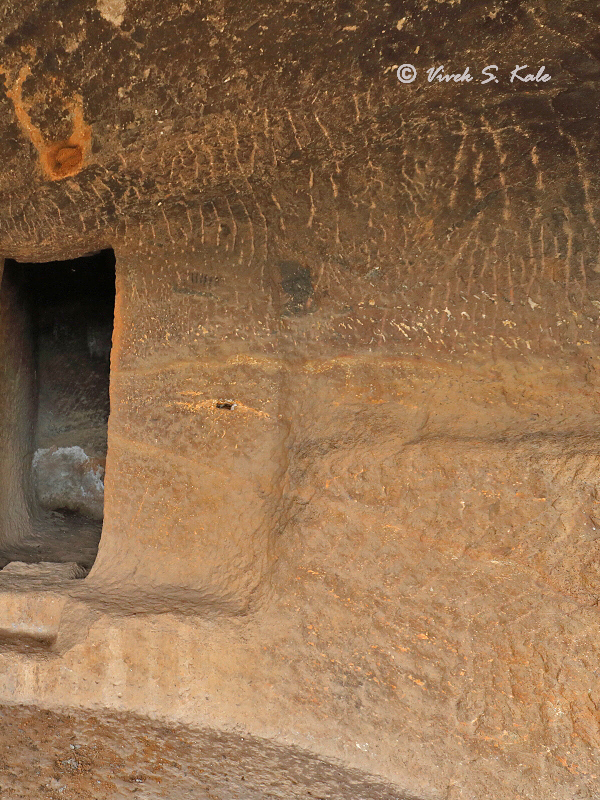 |
| |
| 30. Patan cave # 2, Maval Tehsil, Pune district, Maharashtra, India |
| |
|
|
| |
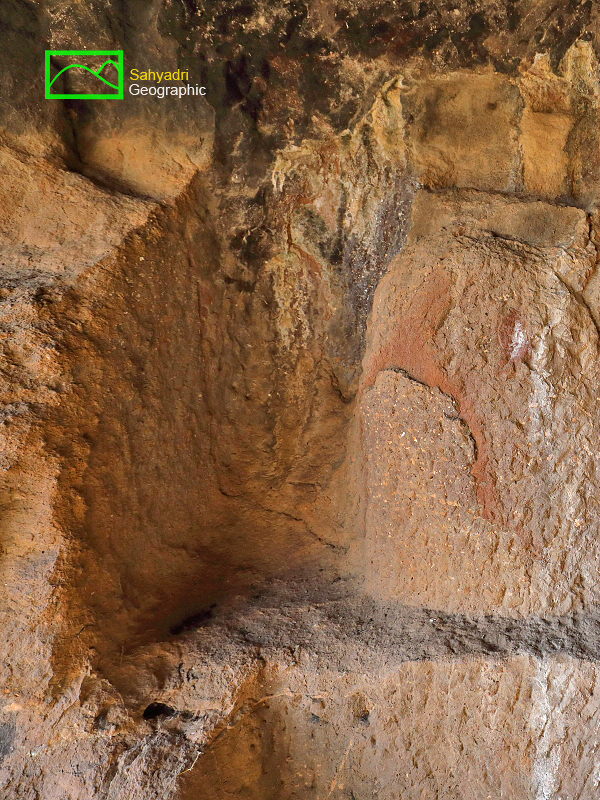  |
| |
| 31. Patan cave # 2, Maval Tehsil, Pune district, Maharashtra, India |
| |
|
|
| |
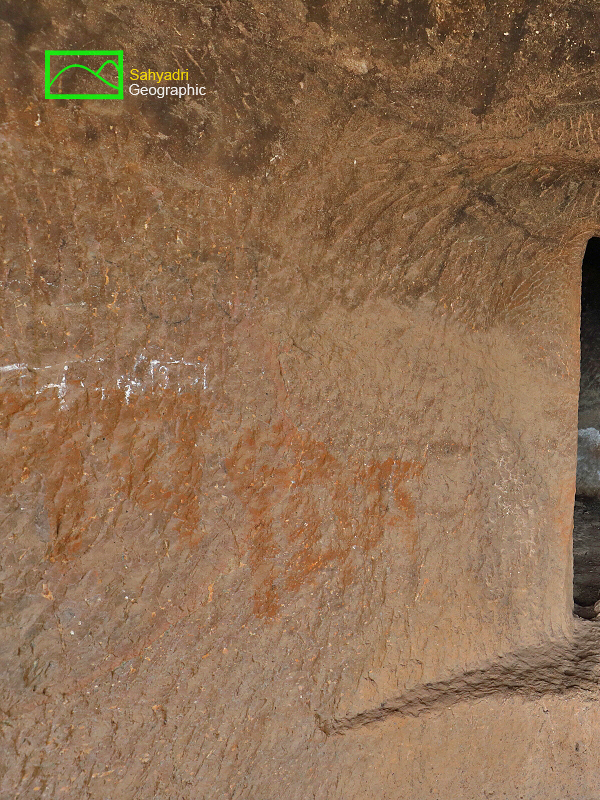 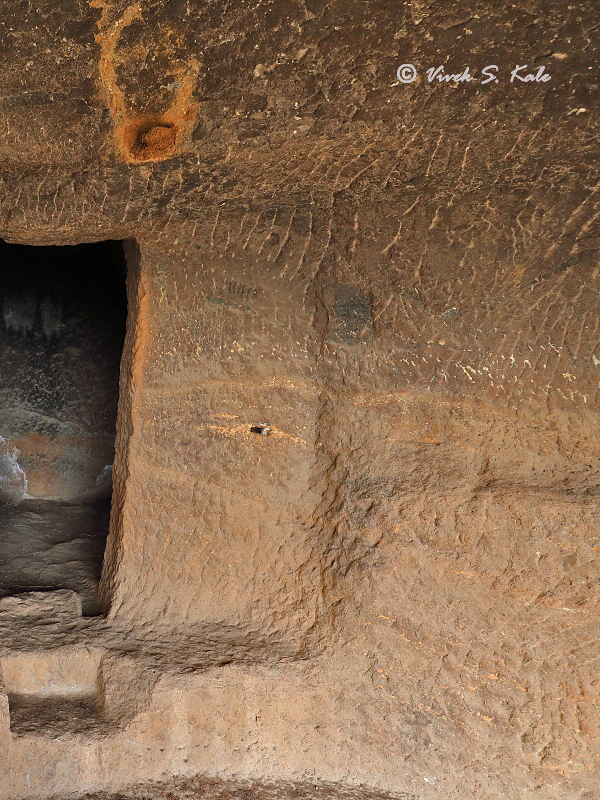 |
| |
| 32. Patan cave # 2, Maval Tehsil, Pune district, Maharashtra, India |
| |
|
|
| |
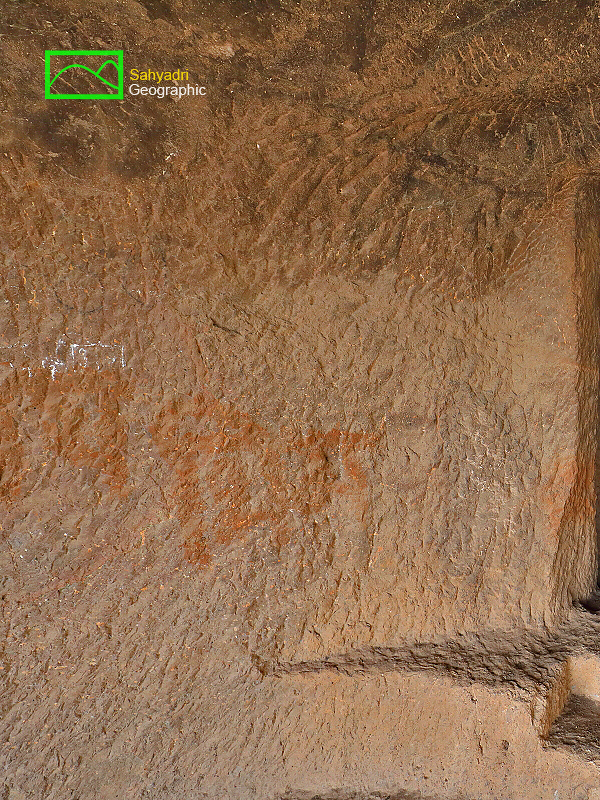 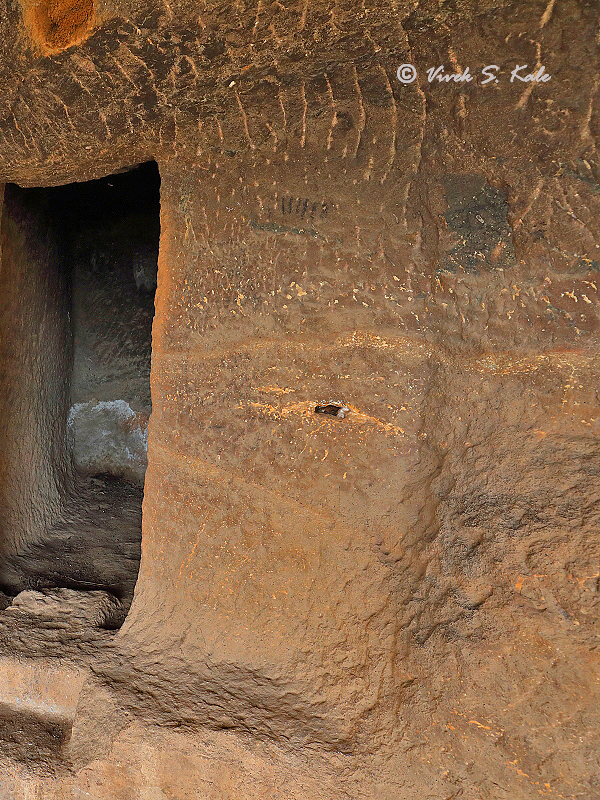 |
| |
| 33. Patan cave # 2, Maval Tehsil, Pune district, Maharashtra, India |
| |
|
|
| |
 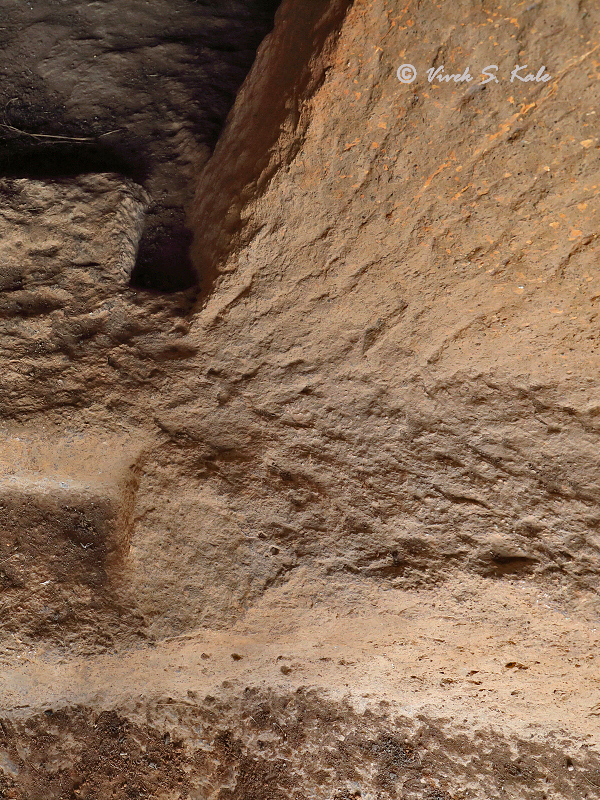 |
| |
| 34. Patan cave # 2, Maval Tehsil, Pune district, Maharashtra, India |
| |
|
|
| |
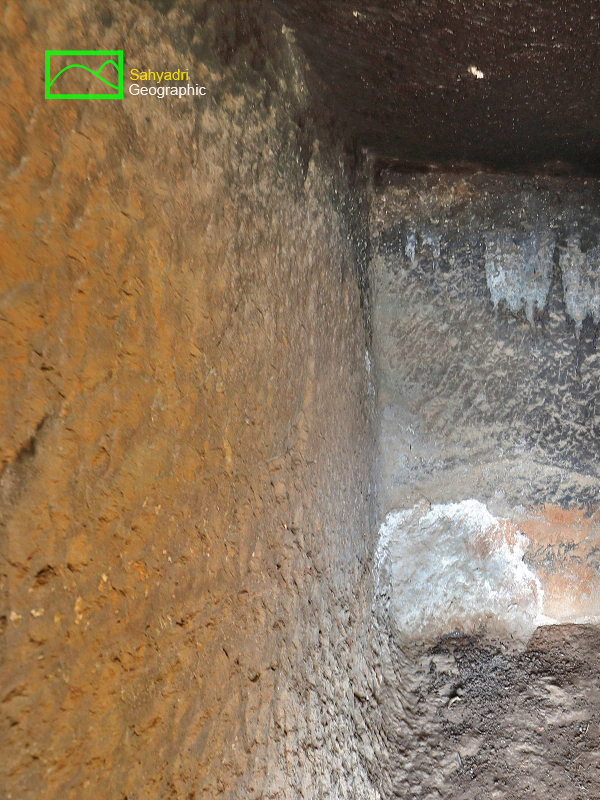 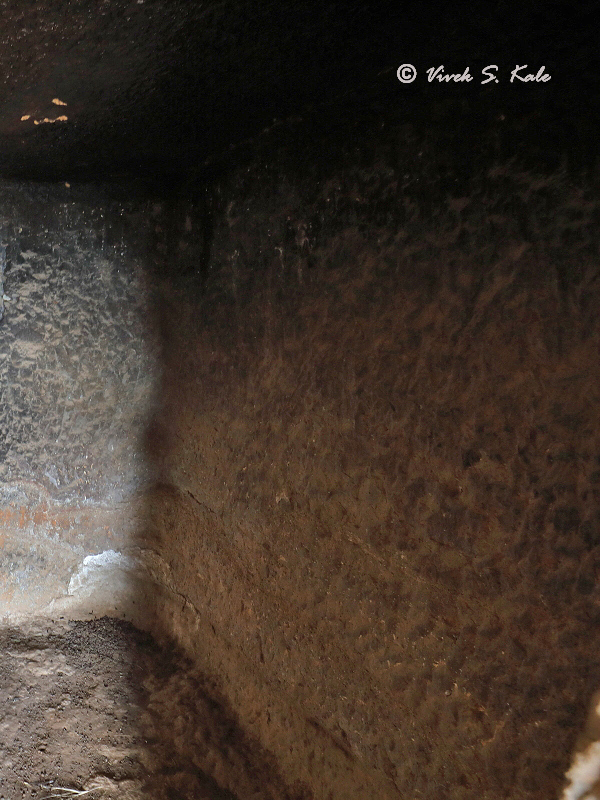 |
| |
| 35. Patan cave # 2, Maval Tehsil, Pune district, Maharashtra, India |
| |
|
|
| |
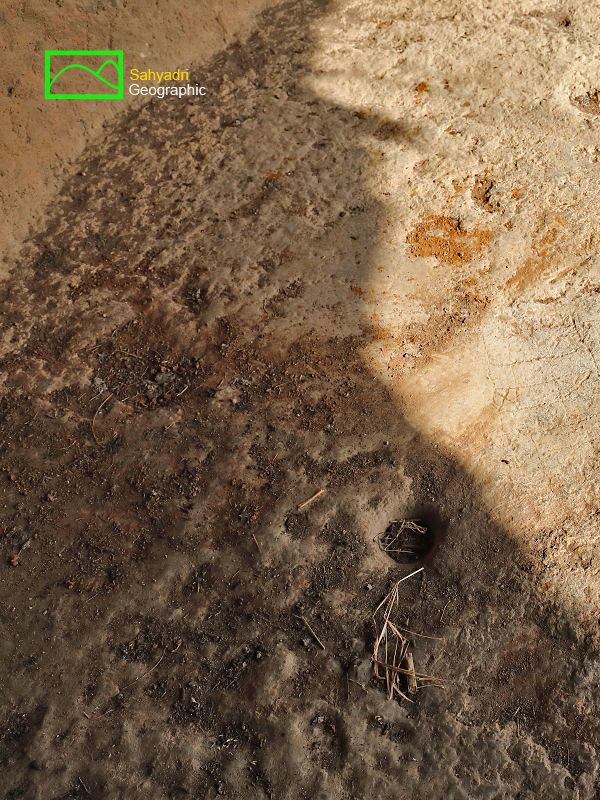 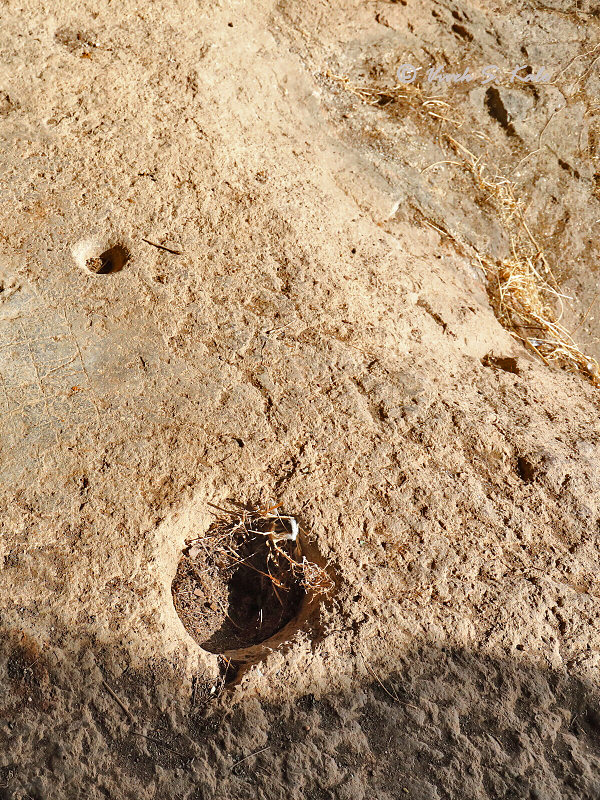 |
| |
| 36. Patan cave # 2, Maval Tehsil, Pune district, Maharashtra, India |
| |
|
|
| |
 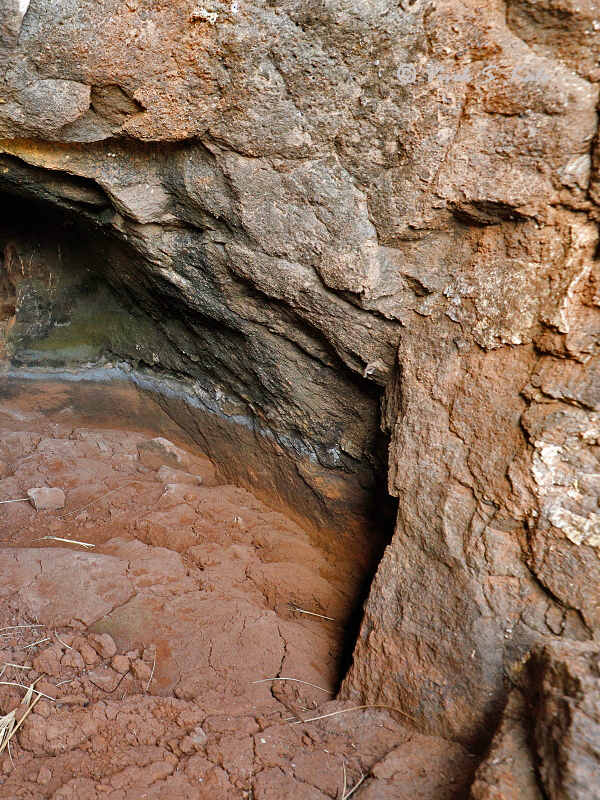 |
| |
| 37. Patan cave # 2, Maval Tehsil, Pune district, Maharashtra, India |
| |
|
|
| |
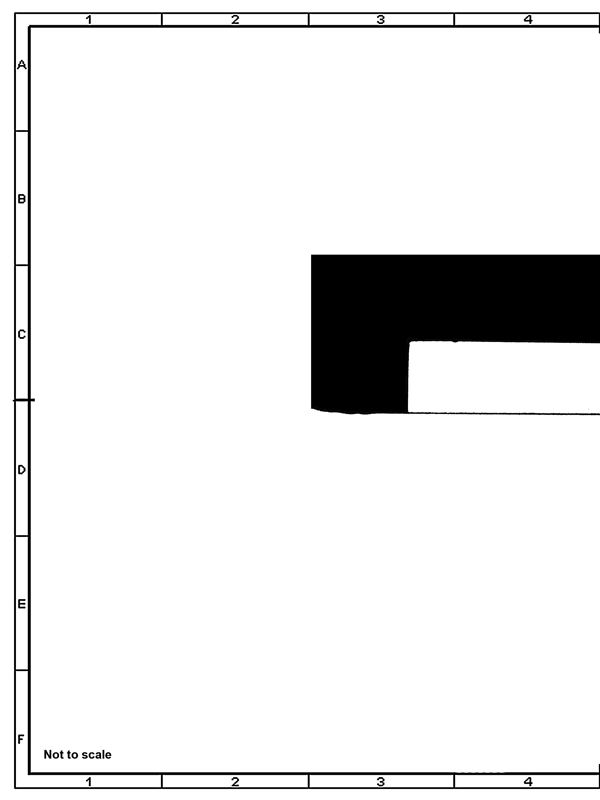 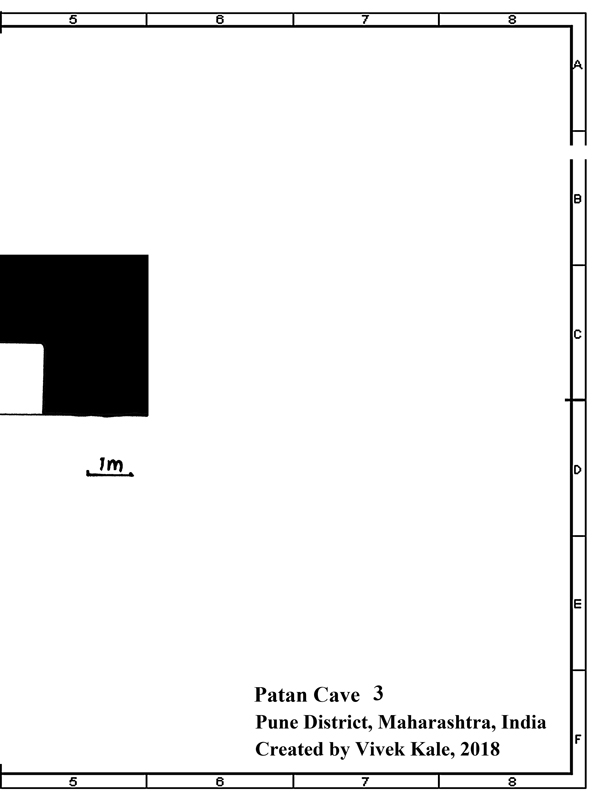 |
| |
| 38. Patan Cave # 3, Maval Tehsil, Pune district, Maharashtra, India |
| |
|
|
पाटण लेणे क्रमांक ३ : पाटण गावाच्या दक्षिणेला विसापूर किल्यावर जाणाऱ्या वाटेलागत नाळेतुन एक मोठा ओढा वाहतो. या ओढ्यात गावापासुन अंदाजे ७०-८० मीटर उंचीवर, एक मोठी नैसर्गिक कपार आहे. या कपार गुहेच्या जवळ पूर्वेकडे झाडोऱ्यांत कातळात कोरलेली अर्धवट लेणी आहे. या ठिकाणी लेणे बनवण्याचे प्रयोजन होते. किल्यापासून हे ठिकाण बरेच दूर आहे. याचा उपयोग किल्यासाठी एक वास्तू असा नसावा. जवळच असलेले पाण्याचआ स्रोत, नैसर्गिक कपार यामुळे येथे लेणे बनवण्यासाठी प्रयत्न झालेला दिसतो. या ठिकाणी कातळात अंदाजे ५.४ मीटर रुंद १.७ मीटर आत आणि १.६ मीटर उंच कोरीव काम झालेले दिसते. येथे जाणे खूप जिकिरीचे आहे. मधमाश्याची पोळी, गच्चं करवंदीची जाळी येथे आहेत. करवंदीच्या जाळी खालून सरपटत येथे पोहोचता येते. येथे आजूबाजूला अजून कोरीव काम असण्याची शक्यता आहे.
|
|
Description of Cave number 3: The least known unfinished cave work (Cave number 3) is located at about 70 meter above the village level on the south side of the village high up near the main stream near a natural cavern. There is a natural large cavern in the main stream coming down from the Visapur fort north entrance. On the eastern side of this cavern at about 50 meter, distance at a little elevation there is an incomplete cave work, large enough. The cave work seems to have just initiated but seems to have been discontinued for some reason. The width of this rectangular cut out is about 5.4 meter. The depth of the cut out is about 1.7 meter and the height is about 1.63 meter. This rock work is hidden deep inside the blue berry bushes, and is very difficult to access due to thorny bushes all around this rock cut work. There are also honeybee hives here, which pose further threat to the visitors.
|
|
|
| |
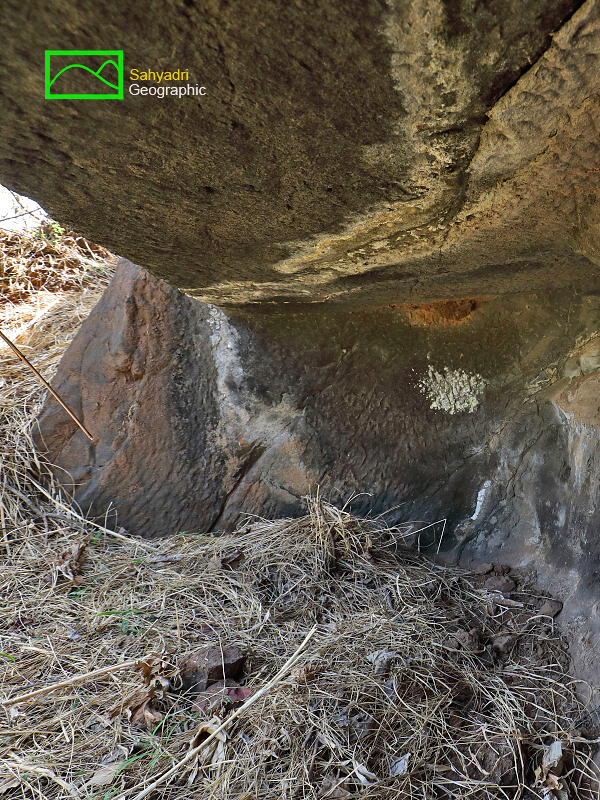 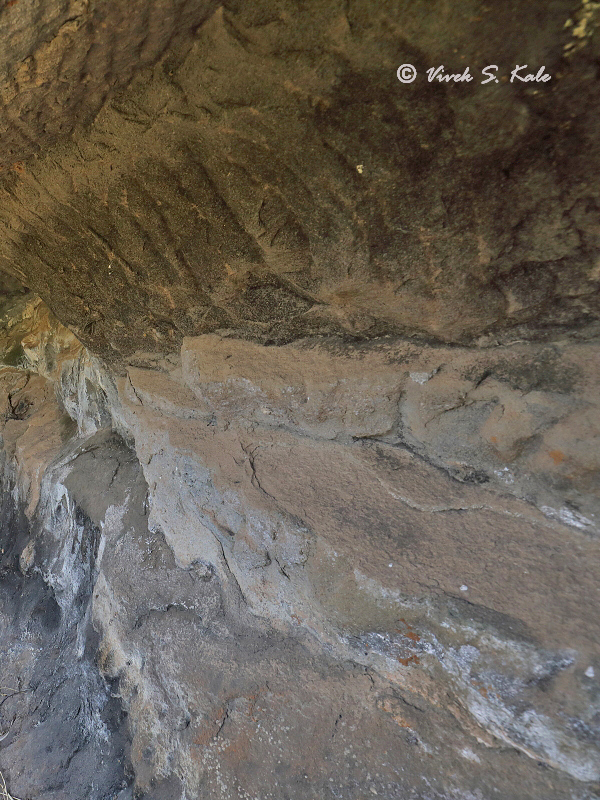 |
| |
| 39. Patan Cave # 3, Maval Tehsil, Pune district, Maharashtra, India |
| |
|
|
पाटण च्या लेण्यांचा उल्लेख जेम्स फर्ग्युसन आणि जेम्स बर्जेस यांनी त्यांच्या "केव्ह टेंपल्स ऑफ इंडिया, १८८०" या पुस्तकात केलेला नाही. मात्र भाजे लेण्यांच्या पूर्वेला आयरा नावाच्या गावाचा त्यानी उल्लेख केलेला आहे. याठिकाणी एक विहार असल्याचा उल्लेख पुस्तकात आढळतो. मात्र आयरा नावाचे गाव किंवा वस्ती या भागात आढळली नाही. कदाचित पाटणच्या लेण्यांचा उल्लेख आयारा म्हणून झाला असावा. विसापयर किल्यावरच्या शिलालेखांचा सुद्धा जेम्स फर्ग्युसन आणि जेम्स बर्जेस यांनी उल्लेख केलेला नाही. या शिलालेखांचा आणि पाटणच्या लेण्यांचा अभ्यास १९८० च्या आसपास झाल्याच्या नोंदी आहेत. आयरा नावाच्या गावाचा मात्र शोध घेणे महत्वाचे आहे.
|
|
Earlier records: James Fergusson and James Burgess have mentioned about the hermit cave at the place called as “Ayara” east of Bhaje in their 1880 publication “Cave temples of India”. However, it is not clear about the exact location of such named village today, as he has described. East of Bhaje across the hill is a village called as Patan. The village is at the base of Visapur fort. There are three hermit caves in the scarp above the Patan village. James Fergusson and James Burgess probably have mentioned about the cave near Patan. It will be more clear if the location of “Ayara” village is identified based on British maps.
|
|
|
| |
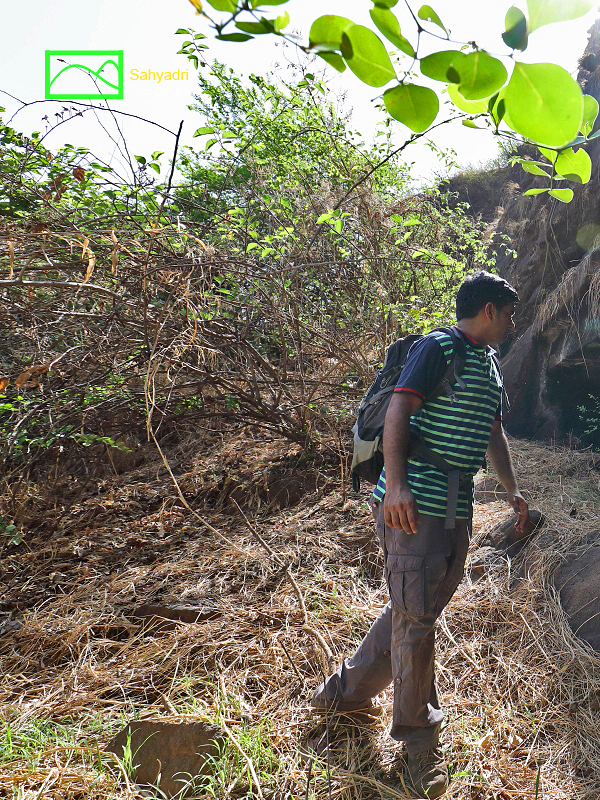 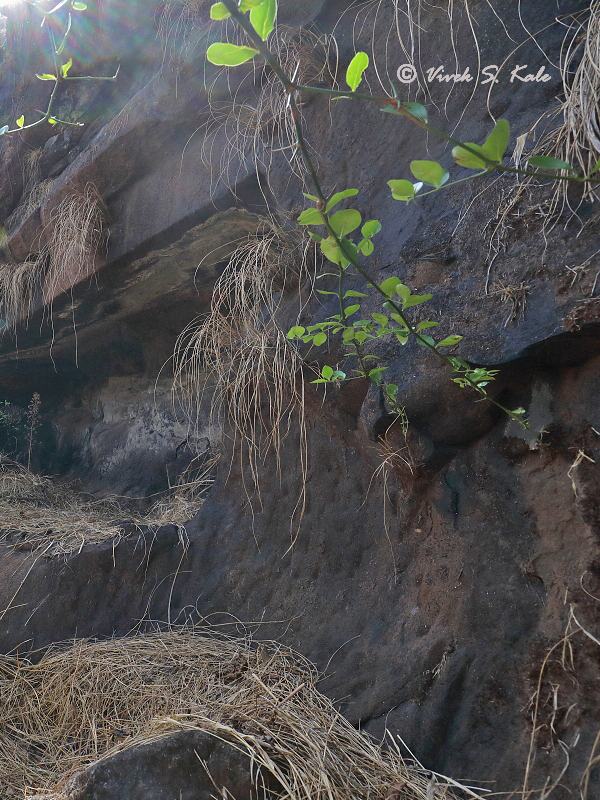 |
| |
| 40. Patan Cave # 3, Maval Tehsil, Pune district, Maharashtra, India |
| |
|
|
| |
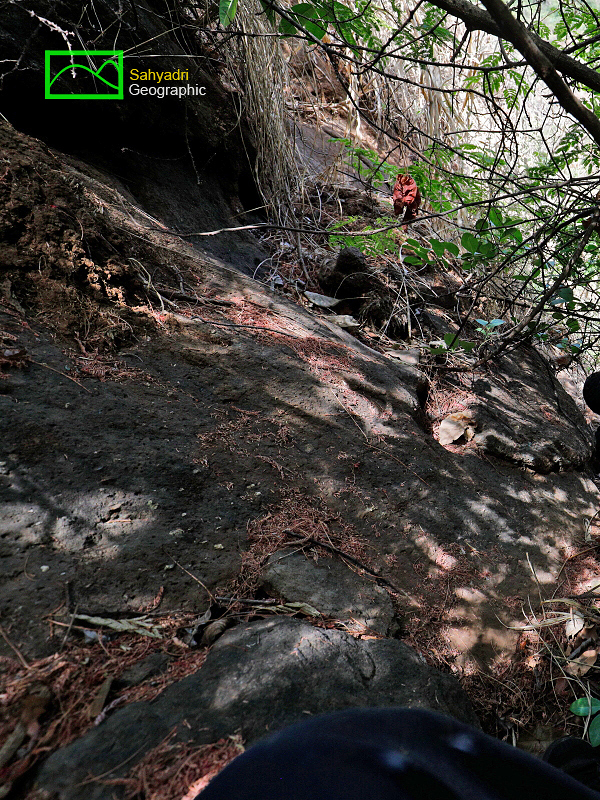 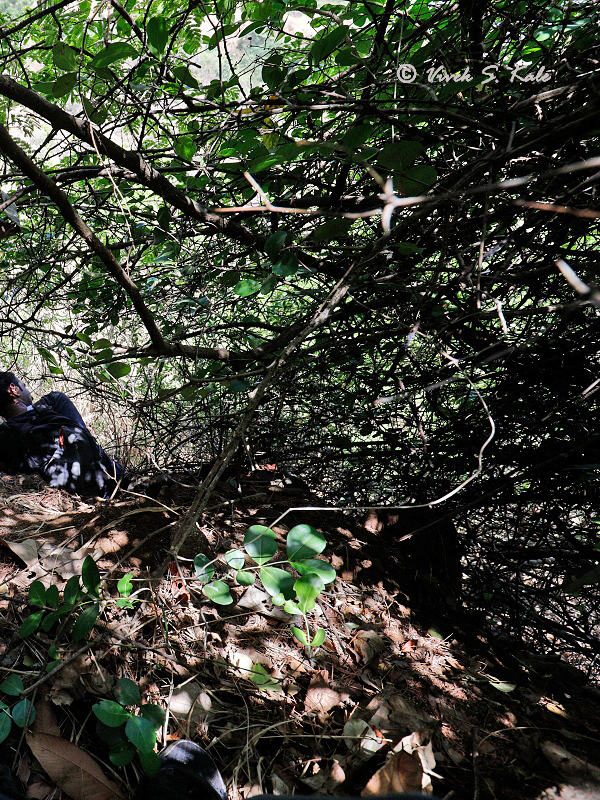 |
| |
| 41. Patan Cave # 3, Maval Tehsil, Pune district, Maharashtra, India |
| |
|
|
| |
 |
| |
|
|
References :
1. Cave temples of India, London, 1880, Fergusson James and Burgess James.
2. Gazetters of Bombay Presidency, Poona District, Volume XVIII, 1885.
3. Buddhist architecture of western India, 1981, S. Nagraju.
|
| |
|
|
| |
|























































































